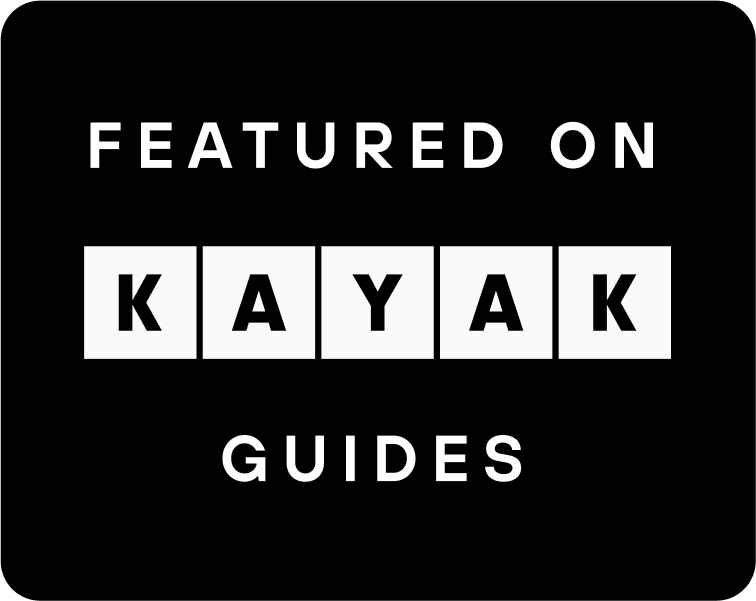EVOKE CONTEMPORARY ART NEWS
(April, 2025)
GO FIGURE: Women Painters and the Figure
April 25 - August 22, 2025
Participating artists:
Pablita Velarde, Helen Hardin, Erin Currier, Rimi Yang, Robin Jones, Kathryn Stedham, Susan Contreras, Irene Hardwicke Olivieri, and Peggy McGivern.
East Rotunda Gallery, State Capitol, Santa Fe, New Mexico.
Curated by Cynthia Sánchez, Ph.D., Director, Capitol Art Foundation, Curator, Capitol Art Collection.
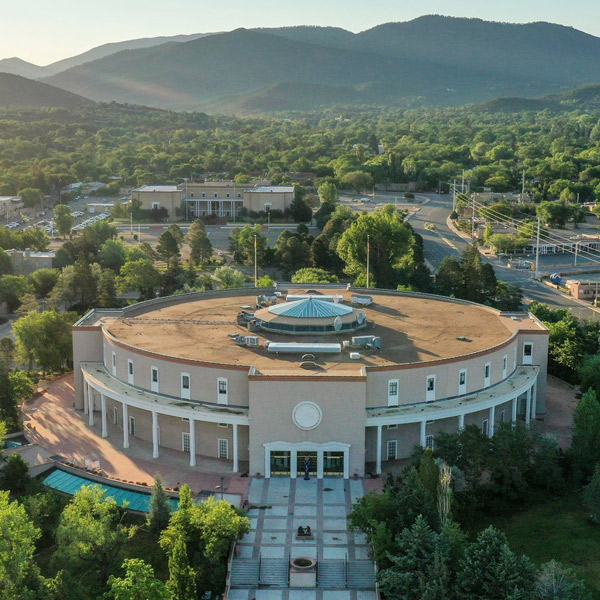
(October 23, 2024)
The New York Times
Once a Bad Boy, Now a Saint Maker
In 1990, Nicholas Herrera, then in his 20s, was in a nearly fatal car crash. When he got out of the hospital, he went to jail for driving under the influence at the time of the accident, as well as for several outstanding warrants for speeding and driving with a revoked license. A guard liked his sketches of other inmates, and he told Herrera that his wife, a curator, wanted to give him a show when he was released.
Feeling as if he’d been given a second chance, Herrera became a santero, or saint maker, committing himself to making devotional paintings, carvings of saints and other religious pieces.
His bold work, which often incorporates wood carving and found objects, is now held in collections at places like the American Folk Art Museum and El Museo del Barrio, both in New York, the Autry Museum of the American West in Los Angeles, and the Museum of International Folk Art in Santa Fe, N.M.
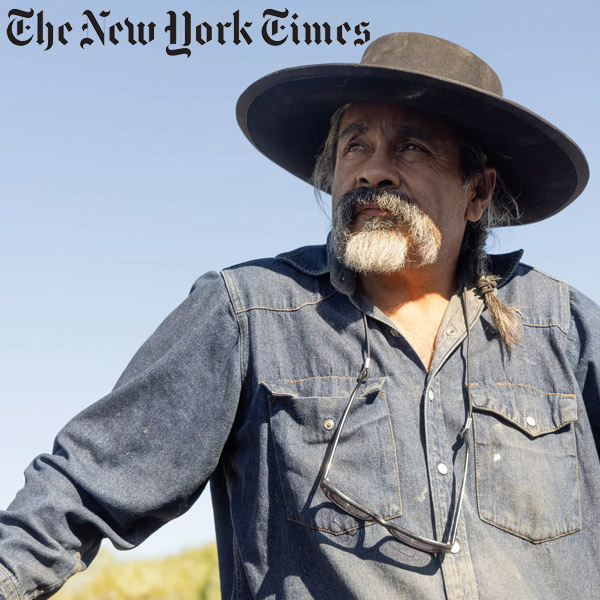
(September, 2024)
The Harwood Museum of Art
Nicholas Herrera: El Rito Santero
September 21, 2024 — June 1, 2025
Nicholas Herrera: El Rito Santero is a glimpse into the life and works of master santero Nicholas Herrera. Herrera, born and raised in El Rito, New Mexico, is a folk artist whose family was among the earliest settlers in the region. Claiming Spanish, Native American, and Mexican ancestry, Herrera identifies as mestizo and descends from farmers and outlaws, landowners and soldiers, craftsmen and artists. He grew up around the Spanish traditions of Northern New Mexico and came of age with a fast-paced lifestyle that resulted in a serious car accident at the age of 26. After awakening in the hospital and recovering from a coma, Herrera felt called to become a saint maker.
As a modern santero, Herrera creates bultos, retablos, and large-scale mixed media works, many of which detail rich and often challenging chapters in his storied life. Through varied mediums, this exhibition surveys Herrera’s personal identity, family history, relationship to place, and political ideology. Still a “village artist,” Herrera continues to reside, regenerate, and create on the land of his family.
Harwood Museum of Art is proud to exhibit the first solo museum exhibition of Nicholas Herrera.
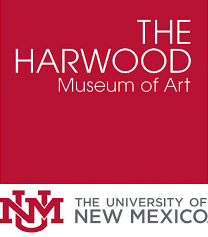
(August, 2023)
Arcanas: Neocolonial Retablos inspired by Tarot
PATRICK MCGRATH MUÑIZ
AUGUST 11, 2023 - OCTOBER 21, 2023
Renowned artist Patrick McGrath Muñiz’s exhibition, Arcanas: Neocolonial Retablos Inspired by Tarot, is his first exhibition at Taller Puertorriqueño. Curated by Daniel de Jesús, this show features 30 new artworks.
By commandeering figures and icons from the tarot, Spanish colonial iconography, and pop culture, the artist recreates scenes that mirror his experience living in a world impacted by the onslaught of digital communication and information, climate change, social inequality, and the global pandemic. After losing his home and studio in Puerto Rico in the aftermath of Hurricane Maria in 2017, the issue of climate change became even more personal for McGrath Muñiz. Among the very few possessions the artist could salvage before the storm, there was a 30-year-old deck of tarot cards, which later inspired him to create his first deck of cards. The incredible loss of years of work and memories imbued the artist with a renewed sense of responsibility to retell our current global paradigm not only through new drawings, paintings, and altarpieces but also in the form of tarot cards now published by US games.
McGrath Muñiz’s distinctive style seamlessly blends bicultural and bilingual consumerist imagery with his signature Baroque-inspired painting technique. By visualizing our world in the Digital Age, he encourages viewers to explore the roots of our colonial past and gain a deeper understanding of how it shapes our present and future.
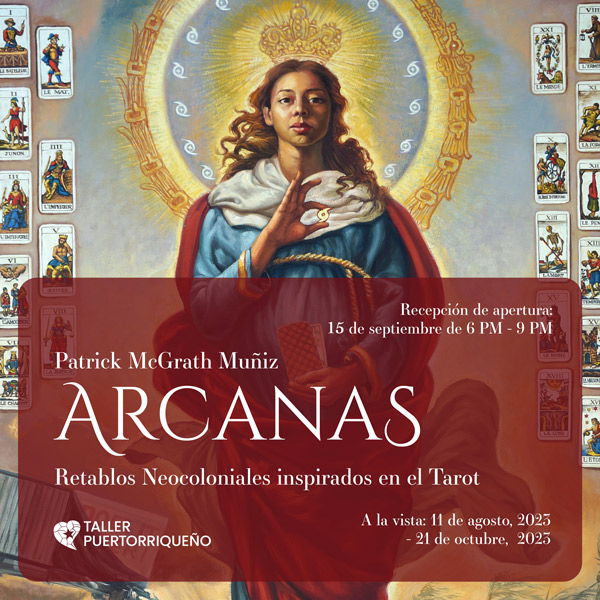
(October, 2020)
Gilcrease Museum - Institute of American History and Art
Landscapes on Fire: Paintings by Michael Scott
August 7, 2020 - February 21, 2021
At the beginning of this new decade, fires and flames never seem to be far from the headlines. An elemental force of nature, fire contains immense power to create and destroy. As humans contribute to increasing changes in the global climate, fire seasons and cycles produce ever more extreme events from Australia to the Amazon to California.
But fire also heals. From the Sierra Nevada Mountains to the Tallgrass Prairie in Oklahoma, naturally occurring fires are part of a healthy ecosystem. In fact, suppressing regular burns has led to catastrophic consequences in the United States. Over the past century, Smokey the Bear’s misguided forest fire prevention efforts left America’s western forests full of excess fuel, leading to today’s firestorms raging beyond control.
Like the Hudson River School artists who inspire his work, painter Michael Scott creates powerful images of the American landscape that speak to urgent issues of our time. The large-scale works in this exhibition all speak to elemental forces of nature: fire, ice and water. Beyond the physical presence of smoke and mist, Scott’s paintings reveal hints of supernatural, unknowable forces in the American landscape.
By portraying constant shifting environments, Scott invites viewers to consider humanity’s responsibility for our rapidly changing climate. With his contemporary homage to the American landscape, Scott explores the surreal power and fragile beauty of the land and encourages respect for the unknowable, elemental forces of nature.

(October, 2020)
Kent Williams at the Meam Museum
Eros, your body as an excuse.
15 October 2020 through 13 December 2020
Barra de Ferro, 5
08003 BARCELONA, SPAIN
It was Golucho who proposed to MEAM the brilliant initiative to organize an exhibition around the concept of EROS, understood, not as an ideal of sexual reverie, but as a reason that emanates from the libido of each human being as something natural and independent of their condition of beauty, sex or sexual characteristic.
EROS as a description of the most physical aspect of each human who, naturally, becomes excited with desire, knows and recognizes his own body intimately, and seeks to explore it, savor it and give it a pleasure.
EROS, not as a Greek divinity, but as an individual reality of every human being who dreams of their intimate moments of sexual fullness, individual or shared.
The result of this initiative has been a diverse exhibition, which brings together sixty artists who have agreed to expressly create for each exhibition a work, and which as a whole is difficult to classify. Some will call it vulgar for not responding to their ideals of beauty; others of poor for not extolling the noblest of the human being; and perhaps others of human, too human, to present the eros of each and every one of the superior beings that populate this planet and who all have the same right to enjoy their dreams and meet their needs.
Sometimes it is the simple reality that appears in a painting, the body in its simple nakedness, but other times it is only the unconscious that leads us to desires, satisfied or dissatisfied, but always alive, always awake, always natural, and always human.
Golucho has been selecting little by little, for months, one after another, in direct contact with each of them, artists of the most varied, painters and sculptors of different nationalities, of the most different styles, without orthodoxy, without imposed fees, without any stylistic unity.
The result is, in short, a walk through the most rabidly current painting, for the most indisputable contemporaneity, and an initiative that brings together authors of the most controversial trends in a unique show that will not leave anyone indifferent.

(April, 2020)
John Simon Guggenheim Memorial Foundation
Alice Leora Briggs
Current Fellow
Fellow: Awarded 2020
Field of Study: Fine Arts
Competition: US & Canada
Alice Leora Briggs was born in an oil boomtown in West Texas, grew up in Idaho's Snake River Valley, and woke up later on la frontera, the borderlands of the United States and México. Her investigations into human frailties have generated thousands of drawings, woodcuts, letterpress books, broadsides, and site-specific architectural installations. These works have been featured in over forty solo exhibitions and are included in over thirty-five public collections, including Crystal Bridges Museum of American Art, Library of Congress, University of Oxford's Bodleian Library, and Yale University's Beinecke Rare Book and Manuscript Library. Publications include Dreamland: The Way Out of Juárez, an illuminated manuscript-police blotter with writer Charles Bowden, and The Room, a suite of twelve chine collé woodcuts with poet Mark Strand. Briggs is the recipient of an Arizona Commission on the Arts Project Grant, Utah Arts Council Fellowship, and Tulsa Artists Fellowship. She served as a Fulbright Scholar at the Academy of Fine Arts and Design in Bratislava, Slovak Republic.

(march, 2020)
The Blue Review
Lee Price honored by The Blue Review
as one of the Most Important Female Artists of 2020
The Blue Review
Committed to bringing art back to art criticism, and art criticism back to art
20 Most Important Female Artists of 2020
article by Liz Adams
Today’s art world is full of dynamic women making unique and challenging art. The Blue Review selected Lee Price as one of 20 exceptional artists, who will inspire you, astonish you, and make you think. These artists are making amazing sculptures, paintings, drawings, murals, street art, cut outs and more. The future is female and the future is now! Lee Price The hyper-detailed paintings of Lee Price center on the theme of consumption. Women appear to be caught in private moments of indulgence. The intricate patterns of fabrics and wallpaper elicit a camouflage effect as the subjects blend in with their environment.

(March, 2020)
Patrick McGrath Muñiz:
Museum Exhibition
March 14th through July 26th, 2020
The Station Museum of Contemporary Art is pleased to announce the opening of No Man’s Land on Saturday, March 14, at 7pm. The group exhibition features artists and individuals from four continents whose work reflects on the legacy of colonialism and intervention, especially as it relates to migration and diaspora. In creating artificial boundaries and imposing foreign power structures, colonialism often generates conflicts which force people into new locations. Many of today’s refugee crises, whether driven by conflict, climate or economic opportunity, can be traced back to colonial imposition. This exhibition is a meditation on the complex legacy of colonialism as well as a starting point for conversations on the shifting layers of indigeneity and belonging. The exhibition will be on view from March 14th through July 26th, 2020.

(April, 2020)
Alice Leora Briggs: Museum Exhibition
March 13th through April 25th, 2020
The Writing on the Wall
Alice Leora Briggs & Julián Cardona
Art League Houston (ALH) is proud to present The Writing on the Wall, an installation of work by Artist Alice Leora Briggs (based in Tucson, Arizona) and text written by Julián Cardona and Briggs (Cardona is based in Ciudad Juárez, Mexico). Selected by ALH’s Artist Advisory Board during the Open Call process, The Writing on the Wall exhibits recent bodies of work addressing immigration and border politics in the city of Juárez, and features visual artwork created by Briggs in conjunction with her projects with Juárez reporter and photojournalist Julián Cardona.

Alice Leora Briggs:
Recent donation to the Library of Congress of somberly enthralling images by Texas artist Alice Leora Briggs (b. 1953). Her 2015-2016 portfolio of 12 woodcuts with chine collé, called The Room.
Through a Glass Darkly: The Room by Artist Alice Leora Briggs in Homage to Poet Mark Strand. September 24, 2019 by Anne Holmes
The following guest post is by Katherine Blood, curator of fine prints in the Library’s Prints and Photographs Division.
In our ongoing exploration of intersections between art and poetry in the Library’s graphic art collections, I’d like to share a fascinating, recent donation of somberly enthralling images by Texas artist Alice Leora Briggs (b. 1953). Her 2015-2016 portfolio of 12 woodcuts with chine collé, called The Room, was inspired by the eponymous poem by former Poet Laureate Mark Strand (1934-2014) with whom she had a longstanding correspondence beginning in the early 1990s. Each woodcut is accompanied by a line from Strand’s poem, which begins:
"It is an old story, the way it happens
sometimes in winter, sometimes not.
The listener falls to sleep,
the doors to the closets of his unhappiness open"
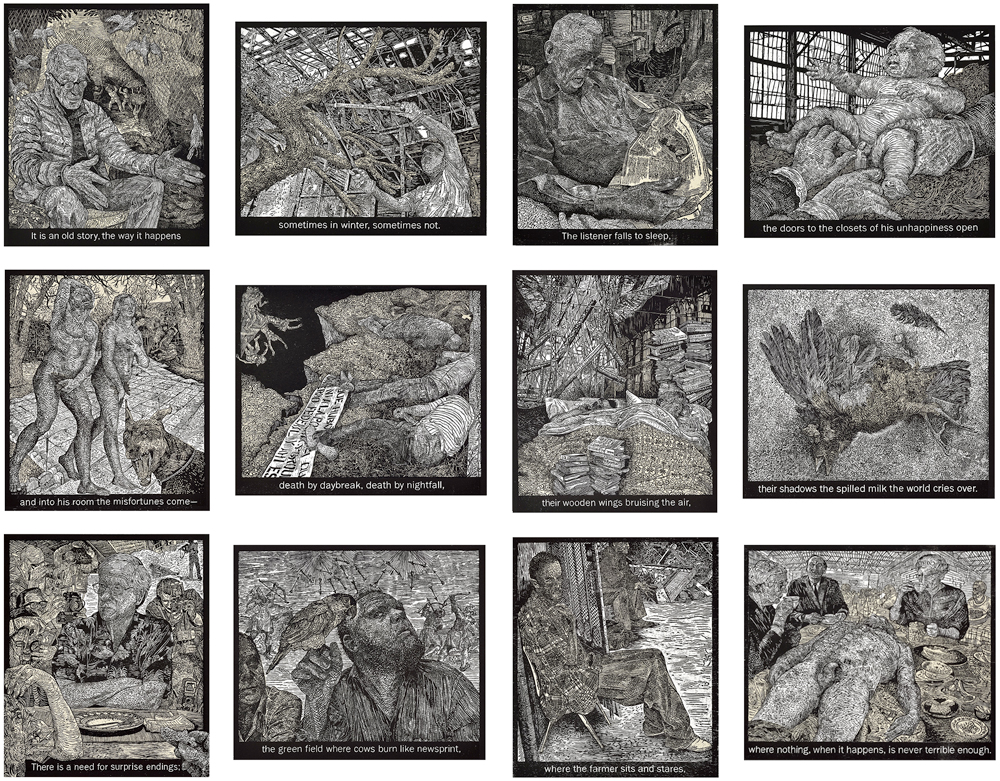 Briggs’ layered, hallucinatory imagery is at once highly specific and purposefully open-ended. She explains: “Strand leaves the front and back doors of The Room wide open. I hope my woodcuts offer this same freedom for viewers to wander through and explore these spaces on their own terms.”
Briggs’ layered, hallucinatory imagery is at once highly specific and purposefully open-ended. She explains: “Strand leaves the front and back doors of The Room wide open. I hope my woodcuts offer this same freedom for viewers to wander through and explore these spaces on their own terms.”
Katherine Blood thanks artist Alice Leora Briggs and Flatbed Press master printer/director Katherine Brimberry for generously answering a barrage of questions during her research and toward preparing this post. Many thanks also to Jill and Stephen Wilkinson for gifting The Room to the Library.

(October, 2019)
Ironic Icons
Patrick McGrath Muñíz processes his reality with dense and evocative worlds:
By Jana Gottshalk (October 23rd)
Iread somewhere that the average person spends roughly five seconds looking at a piece of art in galleries and museums. The Louvre, for example, reports that the average time visitors spend looking at DaVinci's "Mona Lisa" clocks in at a meager 15 seconds, and that's generally agreed to be one of the most famous artworks on the planet. But if you spend only five seconds or even five minutes with a piece by Patrick McGrath Muñiz, you'll be selling yourself short. The more you stand with his work, the more you see. And the more you see, the more you start to pick up on Muñiz's deep dive into current events, social and political situations and his own personal experiences.
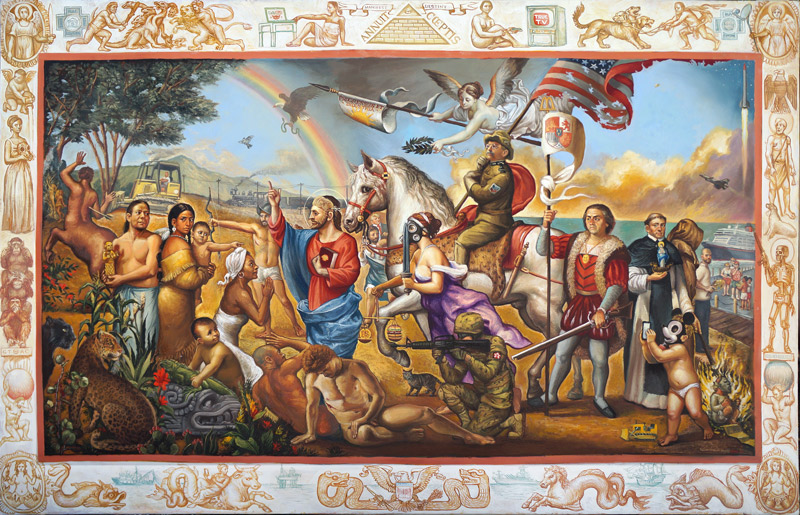
Muñiz is originally from Puerto Rico. Growing up on an island, he could actually see the visual evidence of climate change firsthand. He saw the waterline rising, experienced hurricanes, both in Puerto Rico and his current home of Houston, Texas; he felt the loss of more than one home and his studio, and he pulls from these experiences for his work. Simultaneously, he approaches issues, such as the border crisis and the American fast food epidemic, with caution, using their imagery in an act of empathy and a tool for processing.

(October, 2019)
Introducing Christopher Benson
With a remarkable sensitivity to color and painted surface Christopher Benson creates a unique form of contemporary representational painting. Benson references the ordering principles for his contemporary scenes specifically constructed through, according to the artist, “gestural brush marks, planes of colors, process, and articulated structures.” His approach to the Southwestern landscape features an emotionally affective, luminous palette to express his illustrations of space that articulate a view of the world in richly gestural geometric visual language, contrasting hard-edged imagery with organic forms. Although the representational elements of his paintings can beg immediate narrative interpretation, the arresting nature of Benson’s compositions conveys a more deeply felt psychological responsiveness to structure, color and balance.
Visit the artist's page ►
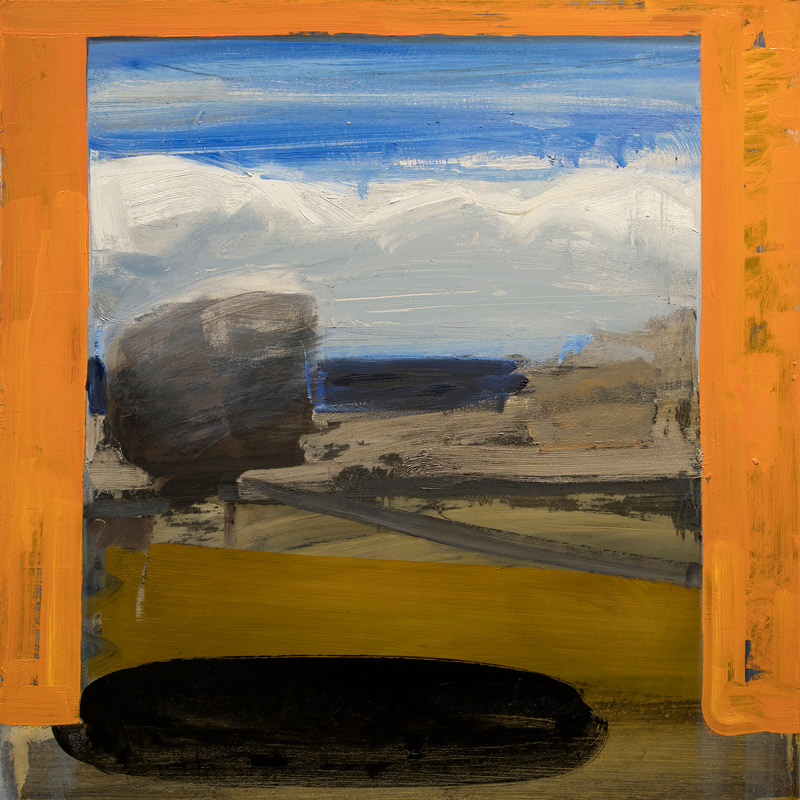
(April, 2019)
Introducing Ester Curini
Italian born Ester Curini is self-taught, hyper realistic painter. She capture the energy, essence, and spirit of each animal she paint. Ester starts her process by spending hours with her subject sometimes spent out in fields waiting for that one magical connection.
Visit the artist's page ►
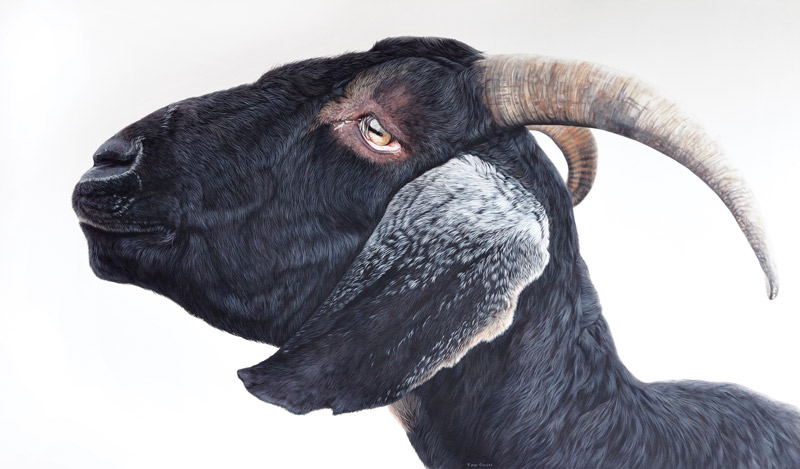
(April, 2019)
Introducing Gregory Ferrand
Gregory pulls on influences as wide ranging as comics, Mexican muralists, and 1950’s fashion to create paintings that reveal the beauty of living. His background in film is evident in the strong use of narrative he employs to tell stories about characters and situations that do, have, and will exist; gently unmasking the psychological or emotional state of the subject, inviting the viewer to share and/or identify.
Visit the artist's page ►
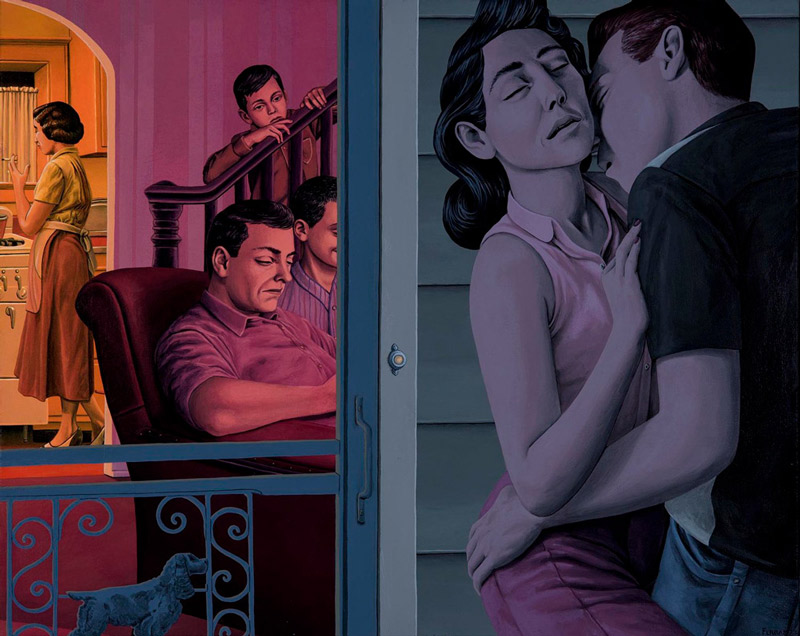
(April, 2019)
Introducing Seth Armstrong
A Los Angeles-based oil painter that has meticulously honed his craft in Northern Holland and Oakland. He holds a BFA from California College of Arts in San Francisco. Whether he’s painting urban landscapes, creating narrative portraits or brilliantly combining elements of the two, Armstrong’s work conveys a stunning sense of intimacy with its subjects, breath-taking light, hyperrealism and humor.
Visit the artist's page ►
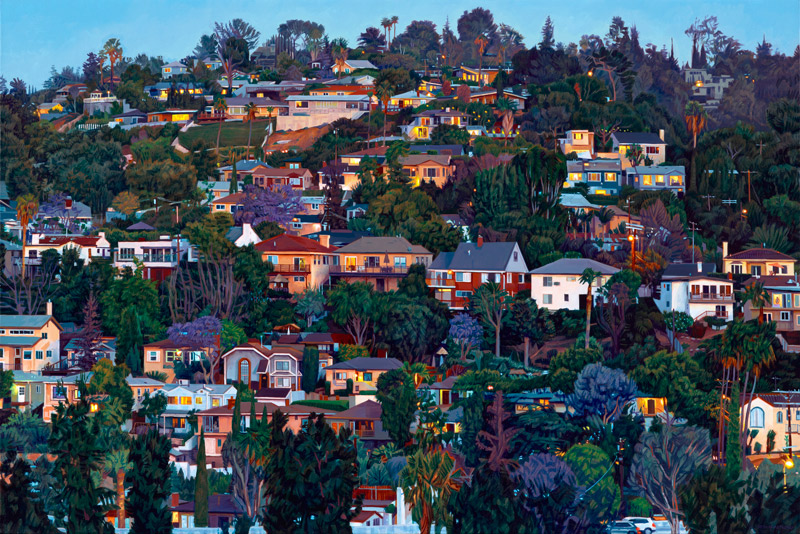
(April, 2019)
Introducing Michael Scott
Michael Scott was born in the Midwest. He studied painting at the Kansas City Art Institute where he received his BFA; He was the recipient of the Skowhegan painting fellowship, Skowhegan Maine and received his MFA from the University of Cincinnati in Cincinnati Ohio. His fascination for the West led him to Santa Fe where he currently lives and works.
Visit the artist's page ►
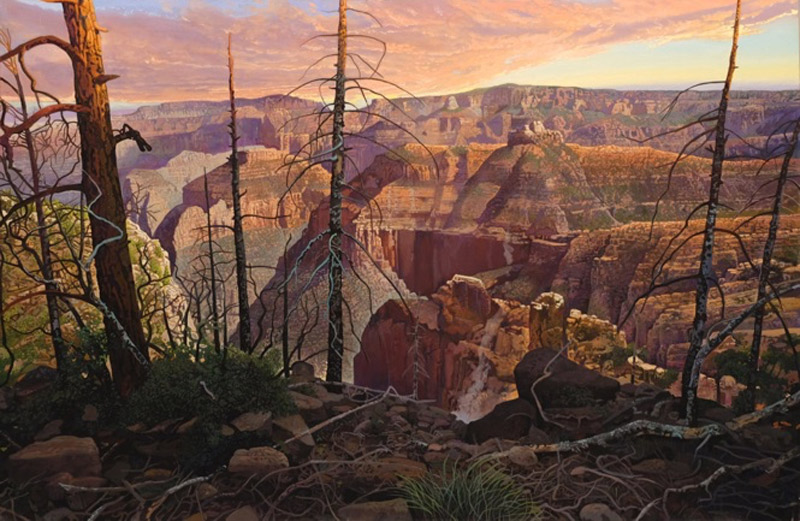
Sculpture exhibition by Javier Marín in San Diego Museum of Art
THROUGH MARCH 3, 2019
A Mexican sculptor of international renown, Javier Marín is best known for his monumental sculpture based primarily on the human form.
At the heart of Javier Marin’s work is the search for identity. Javier Marín’s work, above all, is about beauty, a particularly human beauty that reflects what the poet José Emilio Pacheco described as “the terrible miracle of being alive.”
San Diego Museum of Art
Visit the artist's page ►
Thomas Vigil interview on NM PBS ICOLORES
Aired on January 5th, 2019
Thomas Vigil interview on NM PBS ICOLORES
Visit the artist's page ►
Sculpture by Javier Marín surprises in Paris
November 2018 - January 7, 2019
Sculpture by Javier Marín surprises in Paris. By Perla Sánchez / Obtura Press.
Paris France. November 2018.- The Mexican sculptor Javier Marín has arrived in Paris to exhibit two large-format pieces. "The Reflection VII". Two pieces of the same mold, each attached to his partner, revealing the same side to the eyes. Made of bronze with a weight of half a ton and a height of 7 meters. "Reflex VII" crossed the Atlantic Ocean to showcase Milan and Parma, Italy and now in Paris right next to the historic Louvre Museum.
The second piece on display is "Un Estandarte". Rectangular piece used by the cavalry battalions of antiquity. A symbol that identified them in their struggle. The artist uses it as a metaphor for life that invites us to be in harmony. As a symbol of group or personal identification, "because in the end everyone has their own reasons to fight". Life as war, where each one advances under his own identity.
A native of the state of Michoacán in Mexico, Javier Marín is an internationally renowned artist and one of the most successful Mexican sculptors.
Obture Press Agency
Visit the artist's page ►
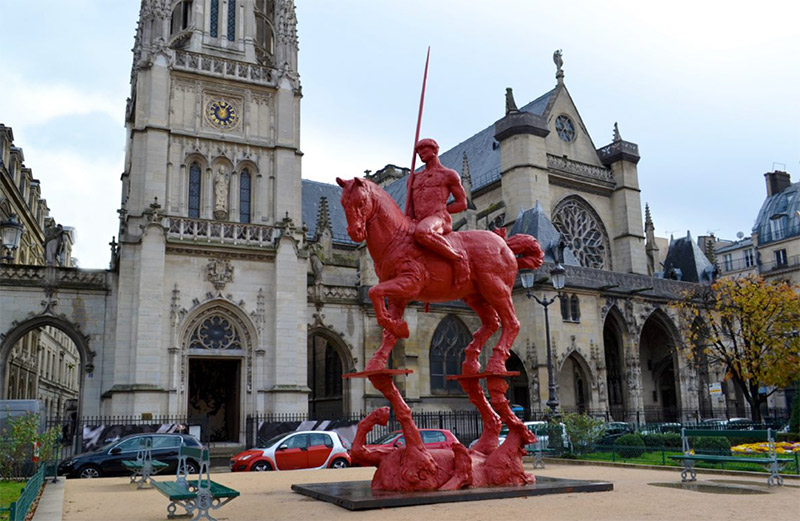
Evoke Contemporary will not be present on Facebook
Starting January 1st, 2019 Evoke Contemporary will not be present on Facebook. We can no longer consciously continue using this platform. Thanks to all of you for following us on Facebook all of these years! To learn more about the issues Watch the two parts PBS FRONTLINE
Lee Price in: Reclamation, a Helen Day Art Center exhibition
June 15 - September 8, 2018
This exhibition features nationally acclaimed, contemporary figurative women artists painting women from their perspective and experience. Helen Day Art Center is driven by an ambitious curatorial vision shaped by the pursuit of meaning in contemporary art. The Art Center pursues exhibitions that address relevant topics in daily life where the artists and artworks included add valuable perspectives to complex social, political, and cultural dialogues. Reclamation \ ˌre-klə-ˈmā-shən \ is no exception: As background, in 2009, three artists decided to explore how women depicted women as subjects of their art, and whether it was different than that of the “male gaze” which regularly portrays women as passive objects of beauty to be observed and enjoyed. The project caught fire and has grown to include more than a dozen gallery and museum exhibitions, both in the US and abroad.
Inspired by this project, we are making a strong statement to reclaim and transform the way women are portrayed. Through the work in this exhibition, we will view women in their lives and environments as active participants. By choosing to portray women, painted by women, in the traditional form of realistic figurative painting in contemporary times, we are also bringing to attention the long history of figurative painting, in which inequality is pervasive.
Women are the future and it’s past time for equality. Every step we make toward this goal is a step forward for humanity. We are creating an exciting, dynamic show that actively engages the viewer in broadening their view of women in art and in the world we all share.
Rachel Moore- Director and Curator, Helen Day Art Center
Diane Feissel- Artist, Co-founder of Women Painting Women, and Co-Curator
August Burns- Artist and Co-Curator
Helen Day Art Center 90 Pond Street, Stowe, VT 05672, Phone: 802.253.8358
Visit the artist's page ►
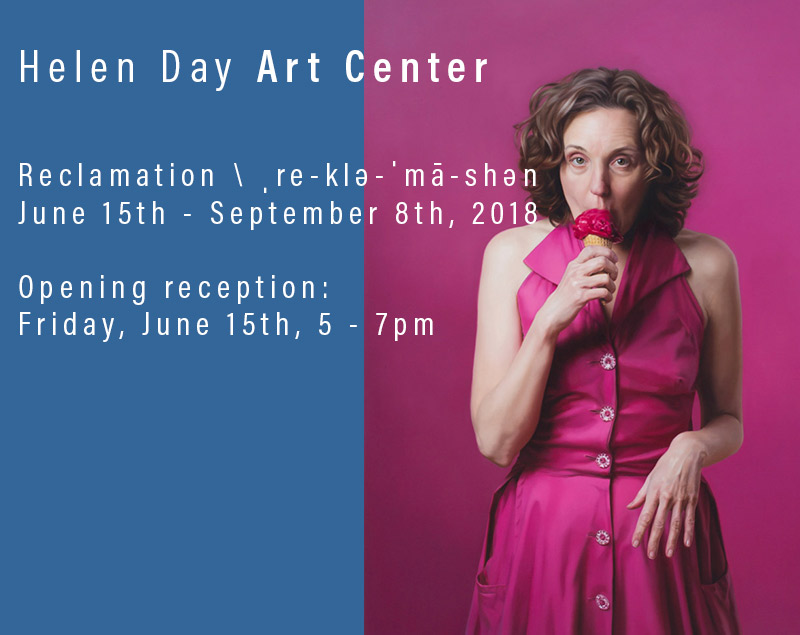
Kristine and Colin Poole selected by the Duane Zemper Legacy Project committee to create a statue of the man affectionately known as “Zemp."
Kristine and Colin Poole are a nationally renowned sculpting team out of Sante Fe, New Mexico with family living throughout Livingston County. Last October, after a nationwide request for proposals, they were selected by the Duane Zemper Legacy Project committee to create a statue of the man affectionately known as “Zemp.” Zemper was a World War II photographer before coming to Howell in 1946.
Kristine Poole said that she and Colin dove deep into his work to learn all they could about the beloved former community member. Kristine said their first impression was that he was an engaging man and consummate storyteller. Their goal is to represent his love for the community and all that he accomplished throughout his life.
With the committee approving a final design for the project, the Poole’s are currently working on a maquette, or small-sized mock-up that will help them visualize the final, full scale project. When completed, the bronze statue will stand slightly larger than life-size and be displayed on the lawn at the Howell Carnegie District Library. It will depict an older Zemper with his trademark sweater and bolo tie holding his camera and leaning on a stack of books. Some of the books represented will be based on his actual work, others will based on his interests and accomplishments. The Poole’s and the committee both hope to have the statue ready to unveil in time for the anniversary of Zemper’s birthday. Look for it in late October, early November.
Visit the artist's page ►
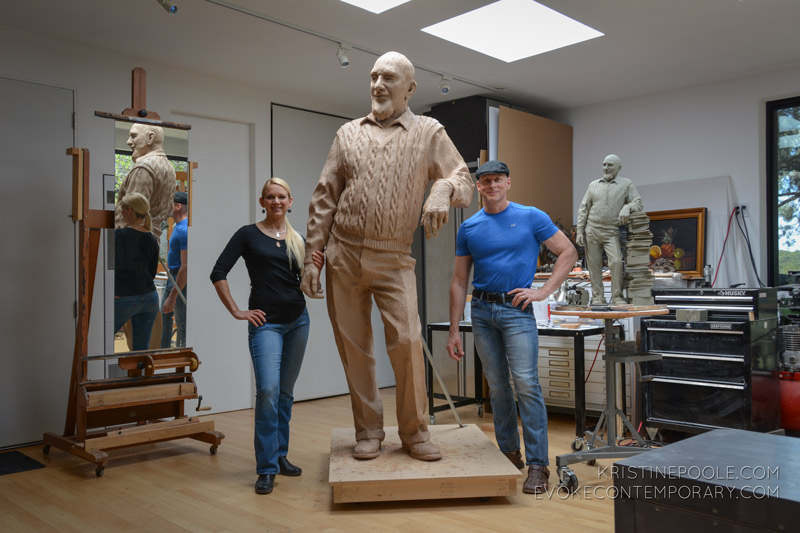
GenNext: Future So Bright, opening May 5th through November 25th
SANTA FE—The Museum of Spanish Colonial Art expands the definition of tradition this spring with its first comprehensive exhibit of contemporary artists. GenNext: Future So Bright, opening May 5 (through November 25) features 50 pieces from 20 trailblazing artists who blend historical inspiration with spray paint, highway signs, furniture, skateboards, tattoos, political commentary, and indigenous imagery.
“This younger generation is not dismissing tradition, but helping it grow,” says curator Jana Gottshalk. “They bring new perspectives on colonial art with pieces that echo tradition while predicting a bright future for the arts in New Mexico.”
Gottshalk gathered pieces from private collections all across the country, crafted by internationally known artists who’ve shown their work at Traditional Spanish Market and Contemporary Hispanic Market. They include near-legendary artists who have blazed a trail for pulling colonial imagery into contemporary art—Luis Tapia, Nicholas Herrera, Marie Romero Cash, Marian Martinez, and Frank Zamora. Joining them are up-and-comers, including:
Brandon Maldonado of Albuquerque, who uses traditional Spanish colonial and indigenous icons in classic compositions, such as ex-votos, to address current political issues such as race and the border.
Thomas Vigil (See his work at Evoke Contemporary Spanish Market group show opening July 27th) of Española, who recycles old street signs and license plates for his classic imagery inspired by Spanish colonial art, using contemporary stencil techniques.
Puerto Rico native Patrick McGrath Muñiz, who paints with a Renaissance eye while delivering visual puns and commentary on political and social issues. (Yes, that is a fast-food hamburger with fries, and Christopher Columbus does join Burger King in McGrath Muñiz’s Holy Combo I).
Erin Galvez of Albuquerque, who employs a minimalist technique in her Mestizoan series to represent patterns within serapes. The pop-art effect references the broader geographic footprint of colonial Spain and invites viewers to bring their own points of view into discussions of identity.
Read more

Visit the Museum of Spanish Colonial Art ►
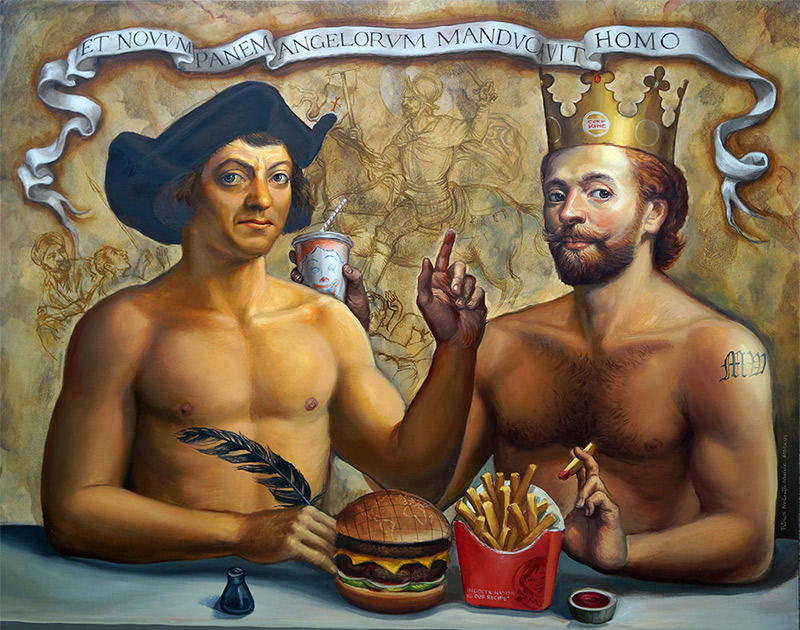
Yale University bought The Room suite by: Alice Leora Briggs
Alice Leora Briggs’ new suite of 12 woodcuts is an homage to Mark Strand, 1990 U.S. Poet Laureate and forms the core of her exhibition titled, The Room.
She received her MA and MFA from University of Iowa and has been awarded received fellowships from the Utah Arts Council, Arizona Commission on the Arts, Tulsa Artist Fellowship, and served as a Fulbright Scholar at Academy of Fine Arts and Design, Bratislava, Slovakia. Her work is included in numerous public collections, including Denver Art Museum, Arkansas Art Center, Crystal Bridges Museum of American Art, Phoenix Art Museum, Scottsdale Museum of Contemporary Art, El Paso Museum of Art, Fine Arts Museums of San Francisco, [De Young], Library of Congress [Rare Books/Special Collections], University of Chicago [Special Collections, Rare Books], Museum of Texas Tech University, University of Oxford, Bodleian Library, Tucson Museum of Art, and Yale University [Beinecke Rare Book and Manuscript Library].
Visit the artist's page ►
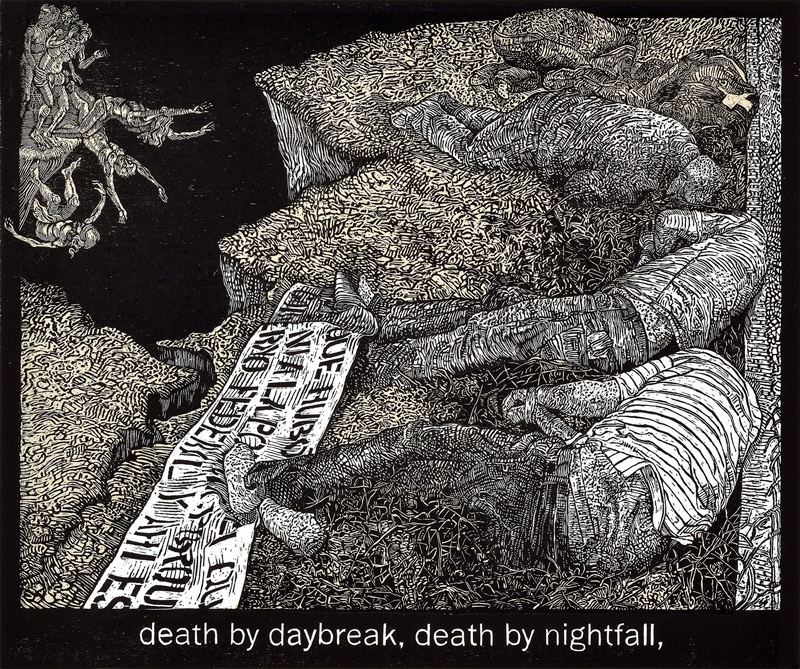
A photo of Nicholas Herrera by photographer Meredith Garcia
A photo of Nicholas Herrera by photographer Meredith Garcia from her "Bad Boys of El Norte series", was awarded Honorable Mention in the 2nd Robert Cornelius Portrait Award competition, and will be shown at the 5th Biennial of Fine Art & Documentary Photography to be held in Barcelona in October 2018.
A gelatin-silver photograph
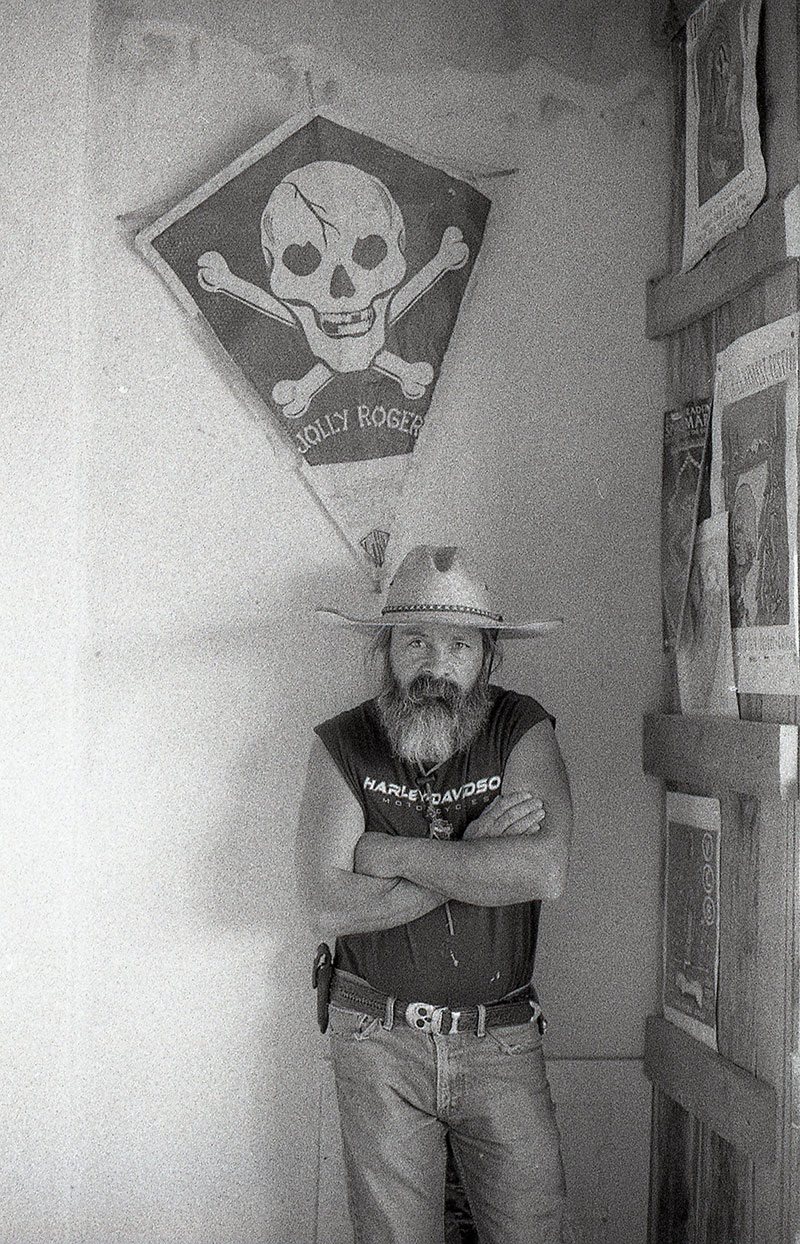
Shoot Portraits, Not People
Jason Siegel & Keith D'Angelo
November 24th – December 24th
OPENING RECEPTION WITH THE ARTISTS
Friday, November 24th, 5:00 -7:00pm
This November, EVOKE Contemporary’s Railyard gallery space transforms into a military cache with Jason Siegel and Keith D’Angelo’s innovative sculptural art installation, Shoot Portraits, Not People. Sniper rifles, Uzis, claymore mines and even a 1947 Willys Jeep will occupy the gallery in a jarring and immersive display of military paraphernalia. Upon closer inspection of this provocative exhibit, however, we find lenses disguised as grenades, photo winders in place of triggers and film canisters strung together as ammunition belts. Denver-based duo Siegel and D’Angelo, professional photographer and accomplished metal artist respectively, build anatomically correct weapons from sourced camera parts to create interactive and powerful installations that comment on the violent abuse of these artful machines, while cleverly exposing the shared vocabulary associated with photography and weaponry.
Read more
RECUERDO [I Remember]
Nicholas Herrera – Land, Water, Art
produced and directed by Christopher Beaver
Director of Racing to Zero, Tulare the Phantom Lake,and the upcoming Where Once Was Water, Las Vegas.
Recuerdo captures a rare and exclusive look behind-the-scenes with renowned artist and Santero, Nicholas Herrera of El Rito, New Mexico, as he tends his land and paints in his studio. Recent winner of the New Mexico Governor’s Award for Excellence in the Arts, Herrera’s life and work is an ongoing remembrance of the land, water, and spiritual traditions of Northern New Mexico.
Watch the trailer ►

Julie Speed at the Louise Hopkins Underwood, Center for the Arts
Exhibition open August 4th through September 30th, 2017
Julie Speed: Gallery Talk
Saturday, August 5, 2017
11:30am 1:00pm
Julie Speed is a painter, sculptor, collage artist, and printmaker who has been exhibiting for more than thirty years.
LHUCA will show 17 works from her series “Undertoad."
Visit the artist's page ►

Soey Milk & John Mayer’s Creative Collaboration
“He’s a creative individual with the biggest heart,” says Soey Milk of accomplished singer-songwriter and talented guitarist John Mayer. “He supports artists 120%.” After a conversation initiated by Mayer over Instagram, Milk was granted complete creative freedom in designing the cover art for his new album, “The Search for Everything.” Mayer gradually released the album beginning with four song collections that were dropped in January and February, which he called Wave 1 and Wave 2. The remaining songs were released on April 14th and the album is now available in its entirety (14 total tracks) on iTunes and Spotify.
Milk, whose subjects are typically female, produced an enchanting drawing of Mayer for Wave 1 with wistful flowers and intricate mandalas blooming in the space behind him. A single, decorated string with small tassels is draped over the singer’s head and around his shoulder, possibly representing a chord or thought weaving through his mind. His face is meticulously rendered as a strikingly realistic image, while the designs surrounding him are drawn as delicate silhouettes. Blooming flowers and draped strings are common symbols in Milk’s graphite drawings and oil paintings, which simultaneously represent the delicacy and ferocity of the feminine.
Read more
Writing by Kelly Skeen
Visit the artist's page ►

Nicholas Herrera on New Mexico PBS Colores - ¡COLORES!
¡COLORES! Aired on: April 08, 2017
New Mexico santero, Nicholas Herrera, weaves contemporary storytelling with traditional folk art.
"Nicholas Herrera is one of the most important folk artists in the United States, who has pioneered a folk art form with his more personal interpretations of traditional bultos and retablos, using wood and recycled metal, including salvaged automobile parts."
quote from New Mexico Department of Cultural Affairs 2016
Visit the artist's page ►
The New Mexican’s Weekly Magazine of Arts, Entertainment & Culture, Friday, January 6, 2017 has selected Julie Speed’s artwork for its front cover
The New Mexican’s Weekly Magazine of Arts, Entertainment & Culture, Friday, January 6, 2017 has selected Julie Speed’s artwork for its front cover, as well as, a four page art review written by Michael Abatemarco.
Speed works out of a studio in Marfa, Texas. Although she spent a brief period in the late 1960s studying at the Rhode Island School of Design, she’s mostly self-taught. She uses her mediums of gouache and collage to complement one another, blending paint and paper seamlessly so that her own draftsmanship and that of illustrators, whose images she culls for her compositions, are cohesive. Read the full article (PDF)
Visit the artist's page ►

2016 Best of Santa Fe: one of the top three contemporary art galleries in Santa Fe
Santa Fe Reporter readers have selected Evoke Contemporary as one of the top three contemporary art galleries in Santa Fe.
Thank you Santa Fe and Santa Fe Reporter! We are honored and grateful for your appreciation and support.
Over 250,000 votes by over 17,000 readers were cast in the final round of 2016 Best of Santa Fe voting.

2015.10.01 / Printing Poetry and Carving Life
Out of a dark world in which death seems commonplace, a spark of light flashes through the intensely powerful and personal artworks by Alice Leora Briggs. Fine Art Today recently caught up with the artist, who graciously revealed parts of her artistic visions and personal journeys.
Hindsight is 20/20, and thank goodness Alice Leora Briggs failed at just about every creative expression she tried, be that music, dance, or theater. Why? Because those failures led her to the visual arts, more specifically printmaking and drawing, two mediums in which the artist has become nearly unrivaled in skill and personal expression. Read more
Visit the artist's page ►

2016.08.23 /Nicholas Herrera honored with Governor's Award for Excellence in the Arts
Nicholas Herrera has received the distinction of the Governor’s Award for Excellence in the Arts and will be honored with ceremonies in the Governor’s Gallery at the State Capitol and at the St. Francis Auditorium in the New Mexico Museum of Art in Santa Fe on Friday, September 23, 2016. Both events are free and open to the public.
This year marks the 43rd annual celebration of the Governor's Arts Awards, which was established in 1974 to celebrate the extensive role that artists and their work have in New Mexico. A diverse and noteworthy list of painters, weavers, sculptors, dancers, musicians, storytellers, poets, actors, playwrights, and potters have been honored by the Governor’s Arts Awards, New Mexico’s most prestigious arts awards. Read more
Visit the artist's page ►
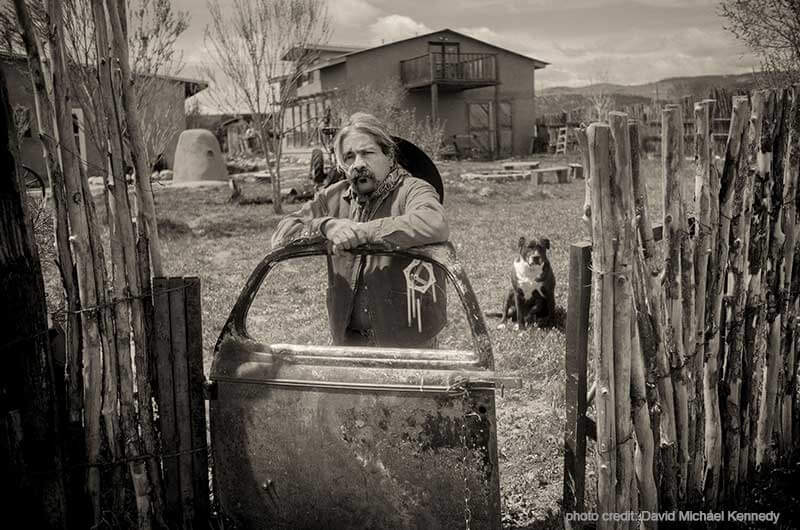
2016.06.07 / On Location / Daniel Sprick
“For me there is two categories of painting experience. There is studio painting and out on location.” Much like Lynn Boggess, Sprick sees painting en plein air as a challenging, but ultimately rewarding endeavor. “What I like most about out on location is that it’s a more concentrated experience because I’m under pressure with everything changing. If you want to get anything done, you’ve got to think of nothing else, and so it being a more concentrated experience it really makes it the best experience that I have.”
The video is a trailer for a documentary film produced by Colorado Public Television about Daniel Sprick that captures the painter preparing his current exhibit for the Museum of Outdoors Arts.
Visit the artist's page ►
2016.06.17 / Self Taught / Jorge Santos
Born in 1959, Jorge Santos is of Portuguese descent. His childhood was spent in Luanda, Angola before his family fled to Lisbon, Portugal in order to escape a violent political agenda. As Portugal sunk into its own revolution, Santos relocated to the United States in 1982. Through out these years, the artist consistently honed his draftsmanship as a form of escape from life's unrest. Particularly struck by an Odd Nerdrum show at Forum Gallery, NY in the 90s, Santos began to experiment with and use paint thereafter. Read more
Visit the artist's page ►

2016.07.13 / Mann Vol. 1 / Jeremy Mann
There is nothing quite like a Jeremy Mann painting. The cityscapes are at once chaotic and serene, the colors vibrant yet mute. There is a moment when you’re looking at his work, when it almost seems as if he arrived from the future to paint it in the past. His new book “Mann Vol. 1” takes the reader on a journey from his days in school up to the present where he is a sought after and established artist. Read more
Purchase the book
Visit the artist's page ►
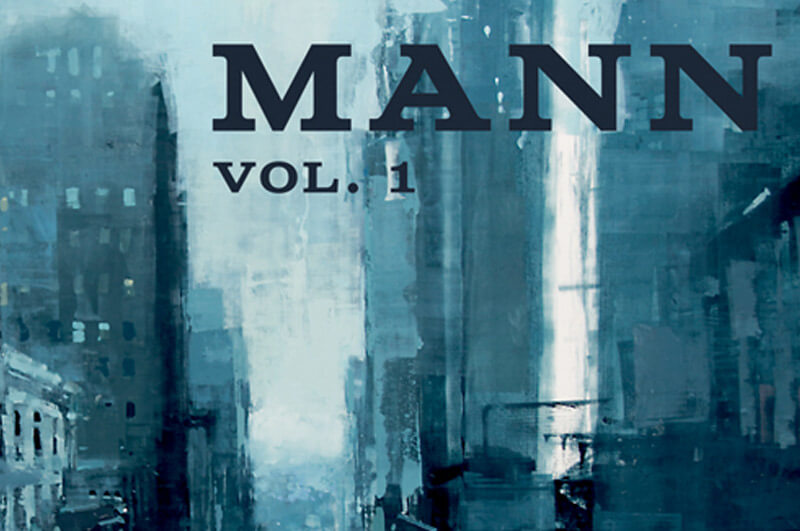
2016.04.02 / Ones to Watch: Spotlighting the work of painter Francis Di Fronzo
Francis Di Fronzo paints the line between truth and fiction. Using trompe l’oeil, a lifelike painting technique that translates to “tricking the eye,” he portrays a convincing perspective of an imagined place. “I’d always been drawn to stark realism,” Di Fronzo says. “I’ve stayed faithful to representing things realistically.”
He started out painting mechanical things from junkyards in the trompe l’oeil style. When he switched to landscapes, about 10 years into his career, he used the same technique but invented the settings. “In my approach to painting a place, I wanted people to think that place was real. Read more
Visit the artist's page ►
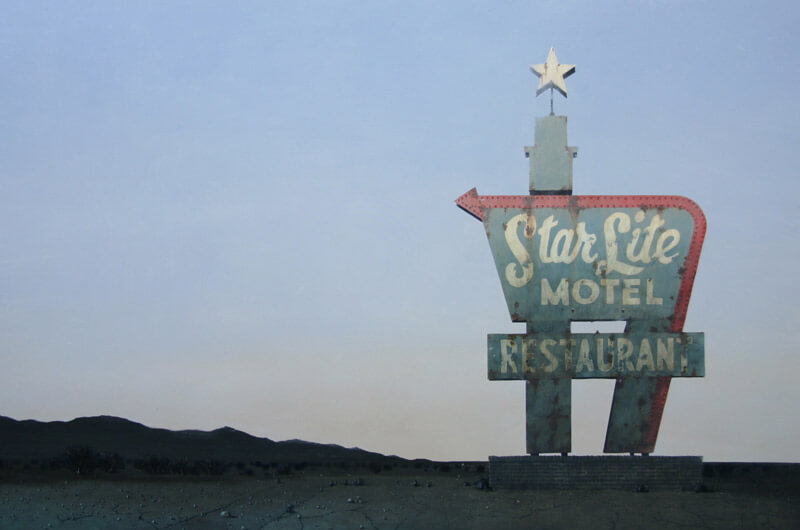
2016.02.15 / Better Call Saul spotlights the art of Francis Di Fronzo
Francis Di Fronzo receives national attention as featured artist in popular series for television “Better Call Saul” with his distinctive paintings that provide an uncomfortable mix of nostalgia and lamentation of the post-industrial American landscape.
Better Call Saul has received critical acclaim. It has garnered several nominations, including seven Primetime Emmy Awards, three Writers Guild of America Awards, two Critics' Choice Television Awards, a Screen Actors Guild Award and a Golden Globe Award. The series premiere held the record for the highest-rated scripted series premiere in basic cable history at the time of its airing. (February, 2016) Read more
Visit the artist's page ►

2015.11.19 / Javier Marín: Terra, Corpus
November 19, 2015 is the opening of Javier Marín: Terra, Corpus, an exhibition set at the Antiguo Colegio de San Ildefonso that will show 49 pieces that reviews the artist’s vision on human figure. It will feature artwork that has never been exhibited in Mexico.
Here the public can view the work at the local and international scene, get closer to the creative process and trends that the artist has developed along his career. The exhibition will be on display until March 20, 2016. (November, 2015)
Read more
Visit the artist's page ►
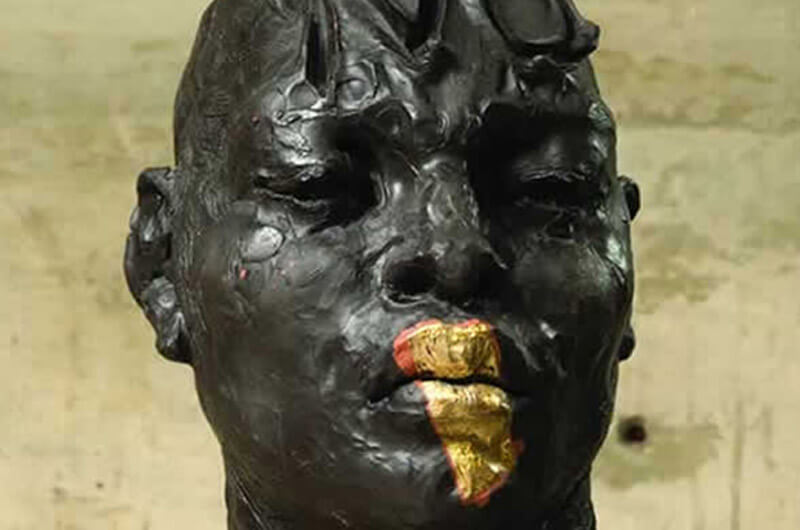
2015.10.02 / Javier Marín: Terra, Matter as an Idea
The National Bank of Mexico through Fomento Cultural Banamex, the Javier Marin and Vacant Land Foundation present the exhibition Javier Marin, Terra, Matter as an Idea. The exhibition will be on display at the Palacio de Iturbide, opening on October 15, 2015, until January 17, 2016.
The exhibition includes about 90 works in clay that highlight the different stages in the production of Javier Marin from its beginnings as a sculptor in the eighties, research and proposals that have forged their technical and aesthetic language, to monumental pieces made especially for this exhibition. (October, 2015) Read more
Visit the artist's page ►

2015.08.31 / Off-the-grid at Winterburn / Lynn Boggess
There is something fascinating about an artist’s studio that for collectors is like magic. From the geography of it’s location to the style of the interior design, each detail tells a different story about the artist's themselves.
With summer upon us, we were reminded of artist Lauren Adam’s wonderful post from August of 2015, where she shared some beautiful photographs from her visit to American landscape painter Lynn Boggess’s and his wife Jennifer’s “extraordinary off-the-grid studio on their lush, wild acreage in West Virginia." (August, 2015) Read more
Visit the artist's page ►
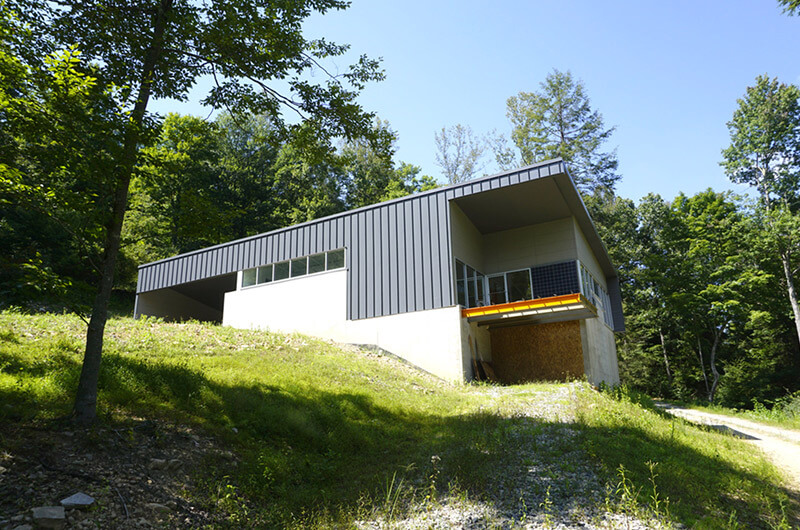
2015.07.17 / Fantastical Fine Art / Kent Williams
“Like a strange love child between Egon Schiele and Salvador Dali, artist Kent Williams’ work has a style that is chaotically charged.” This wonderfully visual sentence comes to us from the fine folks at Beautiful Bizarre Magazine. Last summer they took time out to write a profile about him. They go on to say, “Figurative by nature, and playing with the complicated relationship between representational and abstract, Williams’ work creates a world that is ambiguous and still familiar, “both real and unreal,” he says. The works are hypnotic expressions that could pass for strange surrealistic fantasies.” Read more
Visit the artist's page ►

2015.04.24 / Epic / Kristine Poole
We had a woman visit the gallery recently who was absolutely in love with the sculptures of Kristine Poole, and really, can you blame her? Kristine’s first solo show at the gallery had the perfect title to sum up her work: Epic. Click that READ MORE button and join us as we go back in time to re-experience the awesomeness of that exhibition. Read more
Visit the artist's page ►

2014.05.27 / Women and Food / Lee Price
In the spring of 2015, The Daily Beast website published an interview with portrait artist Lee Price on the topic of anti-food shaming. The interview is largely about her fascination with emotional eating, and why Price decided to use herself as the subject for her latest work. As she says in the article, “I’m painting about how people check out, how people reach for things because–I think it’s in our nature.” Read more
Visit the artist's page ►

2014.08.08 / Beloved / Soey Milk
When people talk about star power, they often refer to an indefinable quality that makes certain individuals charismatic and dynamic in a way that elevates them to rock star status. Whatever that thing is, Soey Milk has it in spades. As the online art resource Wide Walls writes, “The colorful imagery and intriguing figures found in the work of Soey Milk are made even more remarkable by the fact that she is only twenty-six years old.” In fact, that is one of her secret weapons. Her youthful energy is contagious, and infuses her art with personality and perspective. Read more
Visit the artist's page ►

"It's an old story, the way it happens," woodcut print
Printing Poetry and Carving Life Out of a dark world in which death seems commonplace, a spark of light flashes through the intensely powerful and personal artworks by Alice Leora Briggs. Fine Art Today recently caught up with the artist, who graciously revealed parts of her artistic visions and personal journeys.
Hindsight is 20/20, and thank goodness Alice Leora Briggs failed at just about every creative expression she tried, be that music, dance, or theater. Why? Because those failures led her to the visual arts, morespecifically printmaking and drawing, two mediums in which the artist has become nearly unrivaled in skill and personal expression.
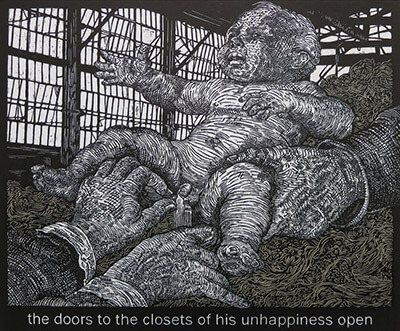
“the doors to the closets of his unhappiness open,” woodcut print
“Apparently, I like to cut things” she asserts. “Whether I am making a sgraffito drawing or a woodcut, I cut white marks into black fields. Each slash throws a spark into dark territory; each mark is a scar. I have a manic duty to botch up surfaces. Each of my images is an accumulation of thousands of marks that chart how my eyes jerk and scan through spaces and whatever these spaces contain. For me, poetry comes from mortal substance — the physical experience of my body moving through the world and an acute awareness that my presence in the world is temporary.”

“where the farmer sits and stares,” woodcut print
Indeed, the triumph over personal tragedy often reveals the strength of one’s resolve, and Briggs’s art has “evolved as an effort to comprehend the black hole that replaced a family member I had not yet learned to distinguish from myself,” she said.
Buzzing about her studio in strife-torn Juárez, Mexico, Briggs is no stranger to death and chaos, and it is an environment that has proven to be a point of clarity for the artist. She writes, “I am drawn to places where death is familiar. I do not romanticize such circumstances; they simple clarify what matters to me.”
Through exquisite detail and powerful, expressive marks, prints such as “where nothing, when it happens, is never terrible enough” remind us all of that which we might care not to see, or admit. Recalling the controversial painting “Dead Christ” by the Renaissance artist Andrea Mantegna, a deceased body, highly foreshortened, lies on a dinner table. All around, individuals drink their beverages and sip their tea without acknowledging the cadaver. Beneath the composition are the words, “where nothing, when it happens, is never terrible enough.” The work is unsettling, but masterfully composed and executed.
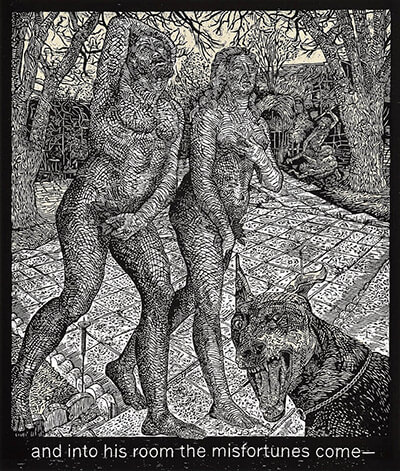
“and into his room the misfortunes come-,” woodcut print
Of her artistic goals, Briggs writes, “I am trying to find something beautiful, even though it is clear to all of us that we often have to look through a dense thicket of atrocities to see it. I have grown to love even this dense undergrowth that blackens our view.”
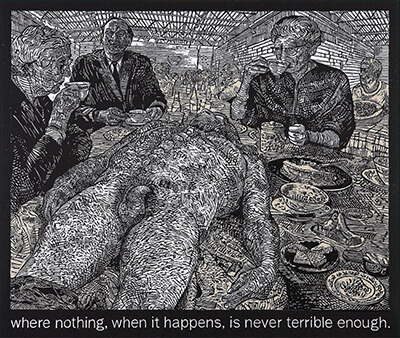
“where nothing, when it happens, is never terrible enough,” woodcut print
The future is bright for Briggs, who recently began an ambitious five-year project, details of which are tantalizingly vague. More broadly speaking, Briggs will “continue to move forward with visual narratives in printmaking, including a long-anticipated return to engraving and drypoint.” Briggs was also recently awarded a 2016 Tulsa Artists Fellowship, where she will work alongside 12 artists from around the United States who have also been selected to participate in an exciting artist-in-residence program sponsored by the George Kaiser Family Foundation.
This article by Andrew Webster Reporting Editor was featured in Fine Art Today
a weekly e-newsletter from Fine Art Connoisseur magazine.

Jorge Santos paintings are a profound display of picture making for the sheer purposes of formulating an all but transparent narrative via highly technical draftsmanship and paint handling. As a self-taught artist, the evolutionary process of his work is often subject to reconfiguration, repositioning, and refinement until the grand conclusion is met. Narrative is of such importance that even compositional concerns may be subordinate to the inclusion of a necessary motif in the storyline.

One may recall the Latin term "dues ex machina," which is a literary device used to resolve a troubled plot. In English, this translates to "God out of the machine." It refers to an unexpected, artificial, or improbable character, device, or event introduced suddenly in a work of fiction to untangle a plot. For instance, consider the artist's 2012 work entitled Maitre D where a fork between one of the dinner participant's toes is tied by string to a wine bottle in the foreground thus preventing it from crashing to the floor. How or why did this happen? This whimsical instance is the result of a mid-production decision to reposition compositional elements in order to resolve the foreground in a more provocative way without having to repaint the bottle.
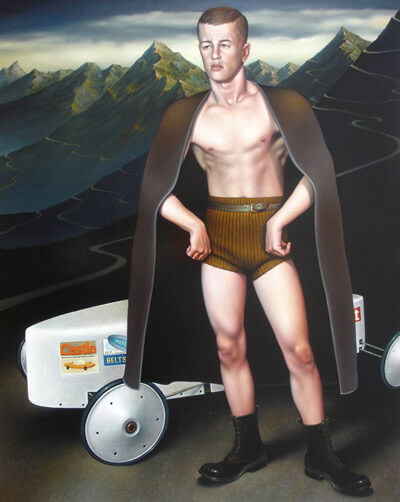
This almost humorous result often surfaces in a Santos work, as for the artist, there are little rules he truly feels the need to play by. Paintings for the artist exist as a cocktail of source materials, from still life to imagery of the mind's eye. They are not pre-assembled sets such as that of the Realist painter, and any "photo realist" instances are purely the result of the artist's skill to portray a likeness. In fact, the ambient lighting and elongated figures are more stylized than authentic, echoing the Italian Mannerist painters of the 16th century.

Though highly refined and emotive, a Santos painting may have a poetic title but this is not a necessity, it's just by way of the artist's improvisational nature. He seems to be commenting on pop culture, derives source material from TV, Internet videos, and other mass media but is humble and quite reluctant to be billed as a social critic. In his pictures, settings come off as irrational or precariously balanced, moods are secretive, illusory, and often ambiguous but there is no argument to their blatant allure and charm over the viewer. These complexities may seem to deliberately provoke interpretation but Santos will only entertain his personal opinion that he is simply an image-maker.
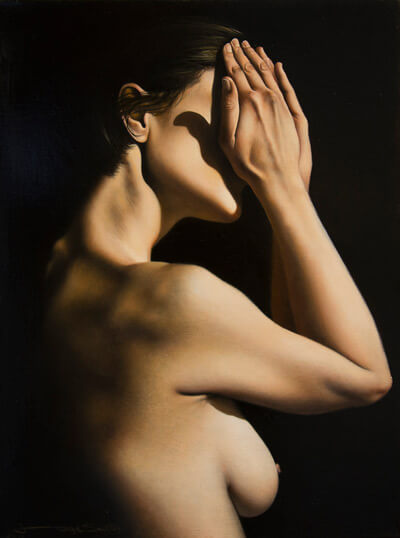

Artists and Arts Contributors Named for 2016 Annual Governor’s Awards for Excellence in the Arts
Contact: Loie Fecteau
Tel: 505-827-6397
Santa Fe – Governor Susana Martinez and the New Mexico Arts Commission today announced the eight artists and major contributors to the arts who will be recipients of the 2016 Annual Governor’s Awards for Excellence in the Arts.
“Our arts and culture make New Mexico unique, and are very important economic and tourism drivers in our state,” said Governor Martinez. “These artists and arts supporters represent the very best New Mexico has to offer. Through the Governor’s Arts Awards, we recognize the diverse and amazing talents of these 2016 recipients, and celebrate their dedication and contributions that ensure our arts and culture are accessible to all, and that our creative industries continue to thrive.”
The 2016 Governor’s Arts Awards ceremonies will be held on Friday, September 23, at 5:15 pm at the St. Francis Auditorium in the New Mexico Museum of Art in Santa Fe. The ceremony is preceded by an afternoon reception and exhibition opening, 3:30 – 4:30 pm, in the Governor’s Gallery at the State Capitol. Both the awards ceremony and gallery reception are free and open to the public.
This year marks the 43rd annual celebration of the Governor’s Arts Awards, which was established in 1974 to celebrate the extensive role that artists and their work have in New Mexico. A diverse and noteworthy list of painters, weavers, sculptors, dancers, musicians, storytellers, poets, actors, playwrights, and potters have been honored by the Governor’s Arts Awards, New Mexico’s most prestigious arts awards. Past awardees include: Georgia O’Keeffe, Robert Redford, George R.R. Martin, Maria Martinez, Tony Abeyta, Glenna Goodacre, Tony Hillerman, N. Scott Momaday, Tammy Garcia, and Catherine Oppenheimer.
Governor Martinez and the New Mexico Arts Commission announce that the awardees for this year’s Governor’s Awards for Excellence in the Arts are:
Nicholas Herrera of El Rito, Artist, Painting/Sculpture/Mixed Media: Nicholas Herrera is one of the most important folk artists in the United States, who has pioneered a folk art form with his more personal interpretations of traditional bultos and retablos, using wood and recycled metal, including salvaged automobile parts. “These artworks are edgy, comic, satirical and powerful,” said nominator Jack Parsons, who received a Governor’s Arts Award in 2006. “He is a treasure for our community.” A drunk-driving accident and a near-death experience forced Herrera to choose between life and death. “He chose a life of art,” said Carmella Padilla, who received a Governor’s Arts Award in 2009 and Luis Tapia, who received a Governor’s Arts Award in 1996, in a joint statement. Herrera is an old soul with a modern outlook, Padilla and Tapia said. “Even with widespread exposure and acclaim, he has stayed true to his artistic history and his home state, while staying true to himself.” Herrera himself has said: “Sometimes, I feel like I should have been born in the 1800s. I’ve got this feeling of the old days in me, like I’m feeling my ancestors, like I want to live like they did.” Tey Marianna Nunn, director and chief curator at the National Hispanic Cultural Center’s Art Museum and Visual Arts Program, called Herrera “a trailblazing artist whose works are informed by the Traditional Colonial Santero practice of New Mexico, yet he has developed a style all his own – a style that while rooted in the past, directly addresses contemporary cultural issues.” Herrera has been featured on NPR’s Weekend Edition, and has received numerous awards, including the 2006 Award of Distinction from the Folk Art Society of America. His art is in the collection of more than 30 museums including the Smithsonian American Art Museum in Washington DC, the Museum of American Folk Art in New York City, and the Museum of International Folk Art in Santa Fe.
Product description:
“Mann Vol. 1” compiles the past seven years of Mann’s work chronicling the lush portraits and haunting cityscapes created from his post-graduate work to the current day. The book features introductions by gallery owner John Pence and noted painter Justin “Coro” Kaufmann.
At 384 pages, this massive new omnibus spans hundreds of paintings, each presented with immaculate detail and color reproduction personally overseen by the artist himself. With a focus primarily directed to the work, “Mann Vol. 1” features only ten pages of text, and over twenty paintings reproduced at full size.
“Mann Vol. 1” comes with a dust jacket, weighs over four pounds and features hundreds of paintings. Purchase the book
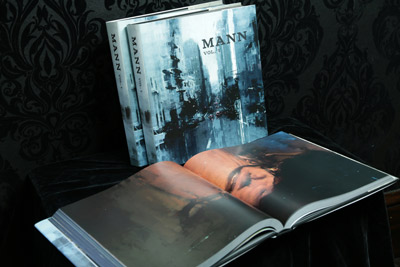
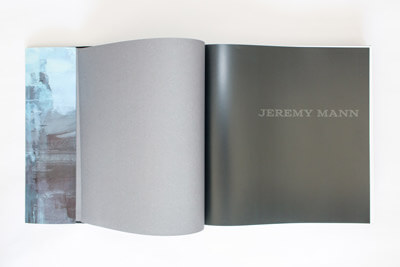
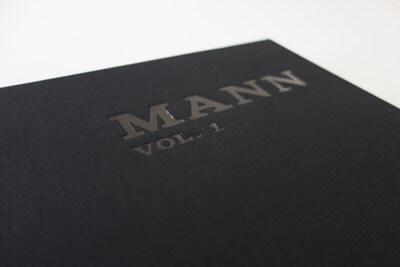
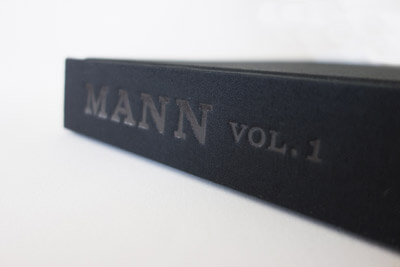
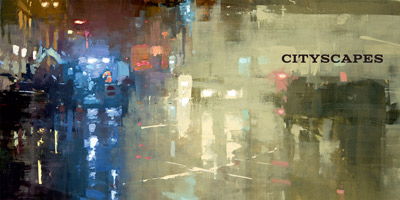
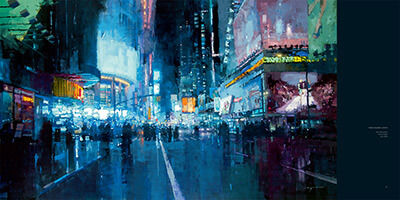
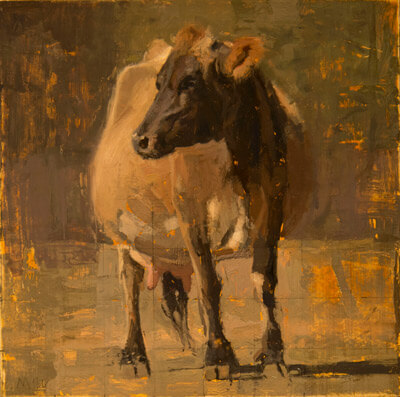
Truth, beauty, and goodness: These are the broad, subjective, and sometimes discounted concepts that form the foundation of Michael Workman’s paintings. Workman’s landscapes are idyllic; they depict the visual splendor of the American Southwest in colorful vistas, sunlit mountains, and far-reaching fields peppered with cattle. At the same time, his scenes convey a deeper meaning, one that simmers just under the surface, slowly escaping from among the layers of oil paint and intricate brushwork. Workman does not endeavor merely to paint an appealing picture, but also to share the spiritual connection he feels to the land and throughout his own life. “I’m a believer, and I believe there’s a purpose behind this existence,” he says. “I want people to slow down, to stop and look at how beautiful this world is.”
Workman’s spirituality is an essential element of his artwork, informing not only his subject matter but also the perspective from which he paints it. He views the artist as the vessel for a higher power, blessed with the ability to reveal the empirical beauty within the land, as well as to harness the spiritual forces that sustain it. Like 19th-century landscape painter George Inness, Workman holds that nature is a manifestation of the divine. As a result, a nature-inspired work of art is something to be felt, not just observed. “Inness was spiritual and also very contemporary for his time,” says Workman. “Like Inness, I hope my work communicates that there’s something below the surface.”
Workman describes himself as a contemporary traditionalist, embracing the historic aesthetics of the western canon while simultaneously infusing his works with elements of abstraction. This juxtaposition of styles highlights Workman’s interest in mining contrasts, both on the canvas and in his creative process. These contrasts are, in fact, the hallmark of Workman’s oeuvre. They engender a balance, allowing his work to straddle the line between romantic and modern, and between bold and demure, as it engages viewers on visual and emotional levels.
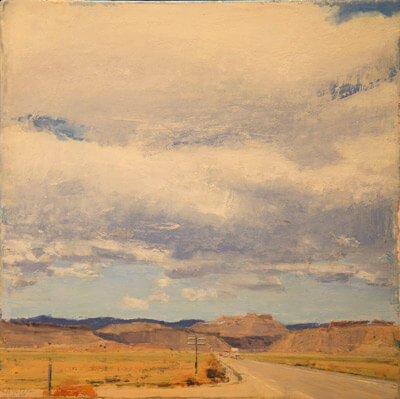
Aesthetic contrasts function as accents in Workman’s compositions: a swath of intense pigment amid more understated colors, bright light next to shadow, or a few thickly painted strokes among the smooth, gauzy areas of color. These divergences are subtle in their drama, however, evoking the sense of harmony the artist tries to achieve across his canvases. “One thing that is consistent in art history is the opposition between different ideas—contemporary vs. traditional, romantic vs. classic, naturalistic vs. abstract. I decided years ago not to choose between the opposites, and instead I work to bring them together in a beautiful way.”
The timeless adage to paint what you love rings true for Workman, who says simply, “I love an expansive landscape—the expanse of the West.” The majority of his subject matter reflects this deep-rooted affection, and although he has traveled across the country and abroad, inspiration most often materializes within the vast natural area that surrounds his home in Spring City, UT, where he has lived with his wife, Laurel, and their five children for more than two decades. He feels a spiritual connection to this bucolic place, which he visited as a child with his father and photographed as a young artist seeking potential subject matter for his earliest paintings.
Growing up on a small farm in rural Utah, Workman was surrounded by the rugged, sprawling geography that today populates his paintings. He felt a bond with the land, along with a calling to draw and paint it, but like many other artists, he never considered fine art as a viable career path. He was fortunate to have talented, supportive teachers throughout grade school and high school, though, and continued his artistic pursuits into college, where he eventually declared fine art as his major. By the time he was finished with higher education, Workman had earned both undergraduate and graduate degrees from Brigham Young University.
Early in his career, Workman was employed as an architectural illustrator, and through the years he has continued to benefit from the technical skills and discipline he learned in the field of applied arts. “I go to work every day,” he says, describing his life as a painter. He considers his art-making a “painful but joyous process” that demands passion along with tenacity, and he appreciates his time as an illustrator for teaching him to draw on that structure. “The work comes first, and then the inspiration. It’s about plugging away until you unlock the magic.”
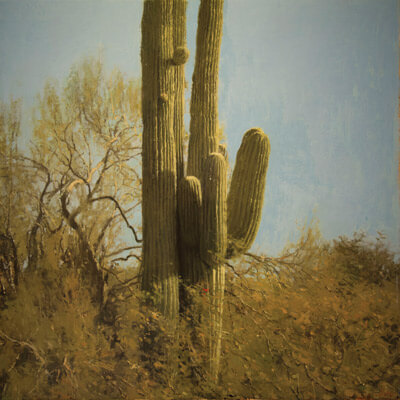
Workman’s creative process is hands-on from beginning to end. He explains, “The process begins long before the actual painting.” He takes great care to thoughtfully steer every aspect of the progression, from photographing his subject matter to mixing colors, painting, and then editing each composition. In this manner, Workman can ensure both the visual and structural integrity of his paintings, for which he stretches linen or muslin over plywood panels.
Workman’s fresh, somewhat impressionistic paintings belie their initial look of spontaneity, in that the artist does not work en plein air. He likes to paint specific, sometimes fleeting moments in time, such as an especially vibrant sunset or the quiet stillness just before sunrise, but he finds trying to capture this type of subject matter on-site too hurried, even restrictive. He prefers a more measured approach and instead builds his compositions through a combination of photographs and memories of his experiences in the field. He then utilizes his studio not only as a place to paint but also as space in which to ponder the imminent artwork and get a feel for it as it emerges. “I love the controlled environment of the studio,” he says. He notes that this method of working allows him to fully develop his ideas and do justice to the subject matter he so keenly respects.
Workman paints thoughtfully but instinctively, without preliminary drawings or sketches. He applies pigment in layers—painting, scraping, sanding, and then repainting—to build complex, sumptuous surfaces. Yet despite their considerable texture and evident brushwork, as a rule, Workman’s canvases remain smooth. Thinly applied strata of paint and glaze fuse together to create a sense of depth that is further refined by a delicate sheen.
Working with a limited color palette, Workman has often been described as a tonalist. He explains that while he did not consciously set out to earn that label, ultimately he has found that a restrained palette allows him to achieve the placid, effervescent quality he wishes to extract from the paint. He starts with primary colors and mixes additional hues as he works, once again taking a hands-on, controlled approach to his art-making.
Through his paintings, Workman attempts to stimulate a dialogue with nature and its intrinsic, potent beauty. He invites viewers not only to gaze at the pigment, light, and imagery on the surface but also to absorb the energy that emanates from below. He seeks to convey the passion and excitement that result from realizing that the sum of the parts evokes the greatest emotional intensity. Workman creates this discourse as he composes each piece. It continues through his painting and editing process, persisting until the painting transcends his own vision and drives the process itself. This is the moment of creative catharsis for Workman, where the work directs its own course, unconstrained and free of his preconceptions. “The real magic starts to happen when the conversation is between you and the painting,” says Workman, who strives to interact with his medium on a higher level, channeling his spirituality and approaching the sublime.
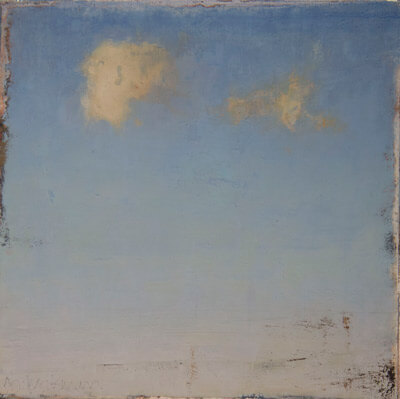
Recently, Workman has entered a transitional phase in his work, challenging himself to take his method of communicating truth and beauty to the next level. Recalling such contemporary masters as Mark Rothko, Richard Diebenkorn, and Gerhard Richter, Workman is beginning to deconstruct his surfaces, producing an increased sense of movement and energy and making the subject matter more universal. He has expanded his exploration of the ways abstraction can emphasize the formal, fundamental elements of the landscapes he paints. Several of his most recent compositions feature these variations, marked by a reduction of detail and spatial compression. Additionally, Workman is dissecting his backgrounds, revealing the canvas underneath and emphasizing the tactility and “objectness” of the painting.
Whatever visual changes Workman may choose to explore, the thematic threads running through his body of work remain constant: the pursuit of beauty in a culture that often overlooks or denies its presence. “My watchword is beauty,” he explains. “It is not difficult to see that we live in a world that is full of turmoil. On the other hand, it is easy to be tempted by the cliché. Rather than choose between angst or picturesque beauty, I hope to offer a reminder that there is beauty in the ordinary. My statement is simple: There are still good things.”
This article was originally published in Southwest Art magazine, who
owns all rights to this material. It is being posted here on behalf of the artist on whom the article is written.
SOURCE: Southwest Art - Beauty Still Exists
2016.05 / Ones to Watch: Spotlighting the work of painter Francis Di Fronzo
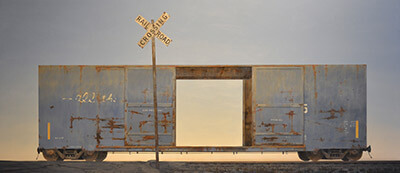
Im Abendrot (At Twilight), oil over watercolor and gouache on panel, 32 x 72
Francis Di Fronzo paints the line between truth and fiction. Using trompe l’oeil, a lifelike painting technique that translates to “tricking the eye,” he portrays a convincing perspective of an imagined place. “I’d always been drawn to stark realism,” Di Fronzo says. “I’ve stayed faithful to representing things realistically.”
He started out painting mechanical things from junkyards in the trompe l’oeil style. When he switched to landscapes, about 10 years into his career, he used the same technique but invented the settings. “In my approach to painting a place, I wanted people to think that place was real. I imagined viewing the trees from the southeast and from the northwest, how they would change shapes when the perspective changed and how they would look in relation to each other. When people see these they think I’m painting an actual location.”
To bring verisimilitude to his work, he relies on the paint itself. His process begins with a watercolor sketch on a wood panel. In some cases, the watercolors show through. “I do this intentionally because the watercolor has a fragile quality,” Di Fronzo says. “If I’m painting an object that needs that fragility, I’ll leave it. If I’m painting a wall of peeling paint, I’ll actually peel the gouache — which does peel if you rub it — to convey this sense of realism. I use the physical qualities of the paint to represent the subjects.”

The Stand, oil over gouache and watercolor on panel, 25 x 56
After earning a master’s degree from the Pennsylvania Academy of Fine Art, Di Fronzo returned to California. He became interested in Western history, particularly in the stories of people who migrated for gold, work or a better life but never found it. He found inspiration, for example, in the carved caves of Death Valley, where miners lived in a 5-by-6-foot cell during the rush to mine silver. He’s uninterested in the nostalgic beauty of the land, instead he wants to paint the places “that leave behind the remnants of people’s hope.”
“I’m painting the West in a manner that is not romanticized in the way cowboys are romanticized,” Di Fronzo says. “Very often you see ruins. When people came West to seek a better life, their dreams were broken.”
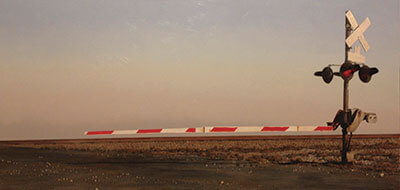
The Gate, part 5, oil over gouache and watercolor, 31 x 62
To paint imagery of forgotten railroads, Di Fronzo created models of train trestles spanning desert ravines so he could understand shadows and movement. “I love the idea of creating a fictional environment,” he says. “And I’m fascinated with railroads. A lot of train tracks are abandoned but they still dominate the landscape. If I have a physical model I can rotate it to get that accuracy.”
Realism is often journalistic. Its purpose is to replicate reality, but he finds these invented worlds to be more impactful. “When I paint from my imagination … it connects to something inside of me. When I [paint] from memory, I find I can connect with more people, because it’s the kind of memory that stays with you,” Di Fronzo says. “And that’s what comes across in the paintings. Imagery exists individually, but there’s a commonality that connects all of us.”
Western Art & Architecture, April / May 2016
Ones to Watch: Spotlighting the work of painter Francis Di Fronzo
Written by Michele Corriel
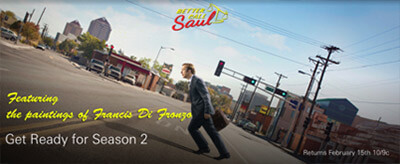
Better Call Saul spotlights the art of Francis Di Fronzo
Francis Di Fronzo receives national attention as featured artist in popular series for television “Better Call Saul” with his distinctive paintings that provide an uncomfortable mix of nostalgia and lamentation of the post-industrial American landscape.
Francis Di Fronzo's pensive, often ominous paintings are rife with both unseen and deeply felt forces: seemingly paradoxical impulses that are integral to his work. Though quite a few of Di Fronzo's paintings contain recognizably western elements, he's just as influenced by the east coast as the west. Born in California, Di Fronzo received his BFA at the University of California, Fullerton, before moving to Philadelphia to attain a Master's degree at the Pennsylvania Academy of the Fine Arts.
About Better Call Saul
Better Call Saul is an American television crime drama series created by Vince Gilligan and Peter Gould. It is a spin-off prequel of Breaking Bad, which was also created by Gilligan. Set in 2002, Better Call Saul follows the story of small-time lawyer James Morgan "Jimmy" McGill (Bob Odenkirk), six years before his appearance on Breaking Bad as Saul Goodman; events after the original series are briefly explored.
The first season, which premiered on AMC on February 8, 2015, consists of 10 episodes. The show's 10-episode second season premiered on February 15, 2016. On March 15, 2016, the series was renewed for a 10-episode third season.
Like its predecessor, Better Call Saul has received critical acclaim. It has garnered several nominations, including seven Primetime Emmy Awards, three Writers Guild of America Awards, two Critics' Choice Television Awards, a Screen Actors Guild Award and a Golden Globe Award. The series premiere held the record for the highest-rated scripted series premiere in basic cable history at the time of its airing.
Javier Marín: Terra, Corpus
November 19, 2015 is the opening of Javier Marín: Terra, Corpus, an exhibition set at the Antiguo Colegio de San Ildefonso that will show 49 pieces that reviews the artist’s vision on human figure. It will feature artwork that has never been exhibited in Mexico. Here the public can view the work at the local and international scene, get closer to the creative process and trends that the artist has developed along his career. The exhibition will be on display until March 20, 2016.

Javier Marin. Corpus, curated by Maestro Ery Camara, Exhibition Coordinator San Ildefonso College, takes the concept of the process as a discursive axis. From this approach, the exposition invites the viewer to stop to look not only at the finished work, but at the intermediate steps between conception and realization thereof; aspects that reveal the technique, the use of different materials and, above all, the idea of the artist. The intrinsic characteristics of his work make it unique.
Javier Marin disregards any attempt to represent or imitate and thus achieves works in which the "beauty of imperfection" looks.
Javier Marín. Terra, Matter as an Idea.
The National Bank of Mexico through Fomento Cultural Banamex, the Javier Marín and Vacant Land Foundation present the exhibition Javier Marín, Terra, Matter as an Idea. The exhibition will be on display at the Palacio de Iturbide, opening on October 15, 2015, until January 17, 2016.
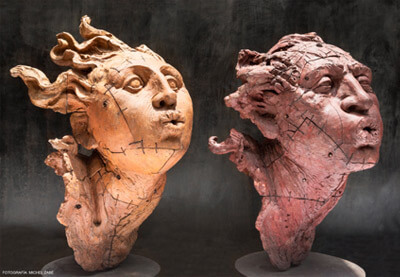
The exhibition aims to bring visitors to the sculptor's work since its materiality, understood as a concept, as a central idea in his artistic production, this, mostly, because it is three-dimensional sculptures.
The pieces physically occupy a space that is its most obvious and expressive content. Hence its monumentality, the texture of the fragmented bodies, the exaggerated features of the heads, attract the viewer's eye to the work of this visual artist and, often it stops there.
Off the grid at Winterburn / Lynn Boggess
Boggess Studio Visit by Lauren Adams
I don't know how everyone else feels, but this summer seemingly zipped by for me! After traipsing around NYC with friends for our short summer vacation (the new Whitney was really great!), Derek and I happily accepted an invitation down to Summersville, WV to visit our favorite professors from college.
Jennifer and Lynn Boggess are extraordinary painters who are building an equally extraordinary off-the-grid studio on their lush, wild acreage in West Virginia. Winterburn (its official name - how cool is that?) is not fully completed yet, but wow, is it stunning, being every bit a dream studio. The space is simple and clean, with unending windows that provide views out into the forest. The artists were considering adding a living space, but in the end, decided it would be a painting-only zone. The studio has zero distractions, unless you would count the large fireplace. I can't stop imagining what it would be like to take a break from your work and settling in on the couch with a fire going, watching snow blowing through the trees. Or even late fall when the leaves are changing and drifting down to carpet the grounds. Another aspect I love most is the huge-yet-still-covered open air space that can be used as a carport or painting area - such a good idea. Enjoy the tour!
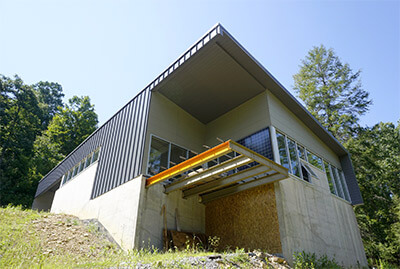
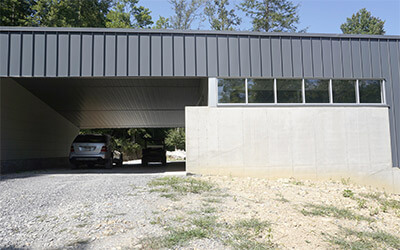
Carport that can also be used to paint under. Love!

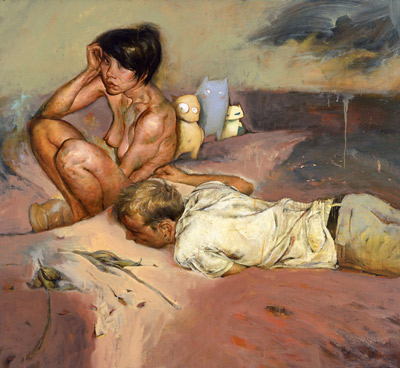
His core strength that carries throughout all his works—whether graphic novel, oil painting or graphite drawing—is the delicate yet uncomfortable balance in playing with highly representational elements and abstracted aspects to find a tangible place for the human experience to live in and be absorbed perfectly. Though his work has evolved and morphed into different series and styles over the past 20+ years, Williams’ work has a very specific quality that is unmatched.
Williams has been an inker, a colorist and an illustrator for hundreds of comic books since the early 1980s, including Hellblazer, The Sandman, Akira, X-Men, Batman, Wolverine, Vertigo, and other Marvel and DC comic books. His comic creations are unique and expressive, and feels like fine at, regardless of the form it comes in. Some of his more notable graphic novels include the 2005 novel The Fountain with Darren Aronofsky, Blood: A Tale with J.M. DeMatteis and Tell Me, Dark from 1992 with Karl Edward Wagner and John Ney Rieber. The influence of the graphic style of his work onto his fine art has become more apparent in recent years, with his most recent works finding an interesting space between expression and representation.
Williams says he is fascinated by artists like Willem de Kooning and Gerhard Richter. de Kooning for his intelligence, depth and compositional sensibilities and Richter for his breadth of disparateness throughout his career. The visceral quality of his process is visible in each piece. Standing in front of one of Williams’ paintings, the viewer is transported to a seemingly real moment, inside the painting itself. The movement and significance of every brush stroke, every line, every dot or dollop of color, pushes and pulls the viewer to a place of understanding, of experience; the kind of quality you see when you are standing in front of a Van Gogh or a Mark Rothko.

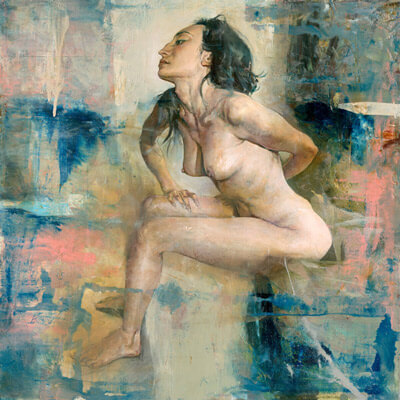


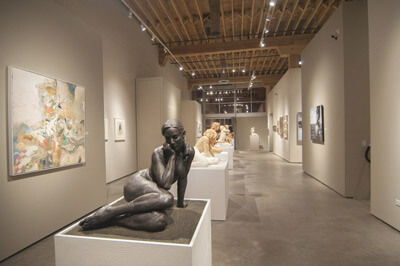
Figurative sculptor, Kristine Poole gives new meaning to the words "body language" with an exhibition of figures wrapped with the words of sociocultural themes. Her sensitive sculptural approach to the figure allowing the inner emotional landscape to be revealed through the external forms of the body.
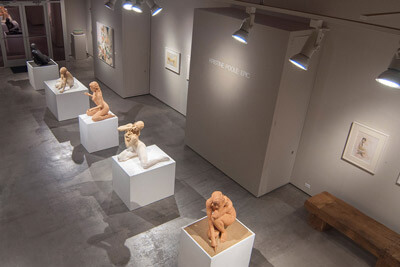
Contrasting classically rendered figures with contemporary motifs and surface treatments, she frequently juxtaposes body language, posture and attitude with text, layering the strength of gesture with the power words have convey, create and define reality and experience.
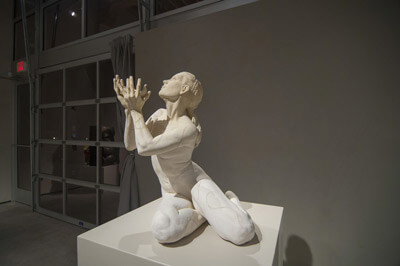
"Originally, I began writing on my sculptures to show the powerful potential words have to define and even create realities -- what other people say to us and about us can have a dramatic impact on our views and experience in life," says Poole.

"Layering text on a figure creates an intriguing dichotomy. We respond instinctively and viscerally to the 'body language' -- the posture and pose in a figurative sculpture -- and more intellectually to the written word. I find that my mind flips back and forth between the visual imagery and being engaged in what the words say, expanding my understanding of the piece. The words themselves, emphasized by the planes of the body, create a pattern and texture as unique as the cadence of someone's speech patterns."
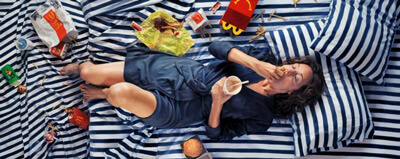
Republished from The Daily Beast
An Artist Explores the Complicated Relationship Between Women and Food
By Erin Cunningham
Many women have a complicated relationship with food, a situation artist Lee Price knows well. In her new series of work, Price explores emotional eating using herself as her subject.:
New York-based portrait artist Lee Price is fascinated with the relationship between women and food. In a series that has taken over seven years to produce, Price features herself as the subject (with the exception of two images, one with her mother, one with a friend) gorging on bags of Cheetos, boxes of sweets, and pints of ice cream in very solitary, almost obscure locations including one’s bed or bathroom (think Lena Dunham eating a cupcake in the bathtub a la Girls season two). Unlike Dunham’s performance, however, Price’s paintings are neither derived from nor aimed at producing humor. They’re based on very real eating disorders (which Price herself has suffered from in the past), and explore the obsession—and sometimes compulsive relationship—many women have with food.
Q1: When did you start working on this series of women and food?
That series started probably about six or seven years ago. I had always—even when I was back in college at an all-women’s school—focused on women and strange environments with women with food all around; things that didn’t make a lot of sense, like somebody holding a bunch of carrots for absolutely no reason. For this particular series, I wasn’t consciously thinking, “Oh, I’m going to make some statement about women and food.” I was actually working on—I always paint from photographs—a kind-of Alice in Wonderland-type thing where there were tea, cookies, and desserts in the foreground, and I was in the background in a floral dress asleep on a big wingback chair. And I was looking at the images and it wasn’t working—so I got this antique tablecloth and threw it on the floor. I threw all the food on the floor and I had a friend of mine get up on a ladder and photograph me lying in the middle of it.
That was the first painting I did in this series. It was called “Full.” There was something about that that really struck me as something I wanted to continue to explore. I didn’t completely understand what it was about, but I continued on with that thing and then it became more conscious. I like that people interpret it in their own ways, but to me, I’m painting about compulsive activity. I’m painting about, specifically, compulsive or emotional eating. I’m painting about how people check out, how people reach for things because–I think it’s in our nature.
Q2: Why did you use yourself as the subject? Is this relationship something you relate to?
Yeah. It took so long for me to connect with what I was doing, but I did have a history of eating disorders. I mean, I’m 47 now, so it was long ago. But in my teens and in my 20s, I had—I wouldn’t say severe—but I grappled with eating disorders. And still, whatever 20-some years later, it’s still where I go—when I’m having difficulties in my life that’s still how I deal with things. Not to the severity that it was, but, you know, I grab a pint of Haagen Dazs without thinking. I don’t know if it’s just how I’m interpreting the pieces, but I feel like there is a bit of shame, but also a bit of pleasure and joy.
You know, I think there are different degrees of things happening in different paintings. I also think that people look at them and interpret them in different ways. I know shame gets used a lot with my work, and I don’t like that word. I don’t relate to it that way.
Q3: Is there a different way that you would describe it?
I would describe it as compulsive, as secretive. But I feel like it’s a person trying to soothe themself. It’s like trying to nurse yourself but not doing it in a way that is actually helpful. Again, I’m not sure why shaming—I think maybe the use of the word: when women do it, it’s shameful, but when men do it, it’s compulsive. Take away the eating and it could be anything—drinking, surfing the net, any behavior you’re using to check out.
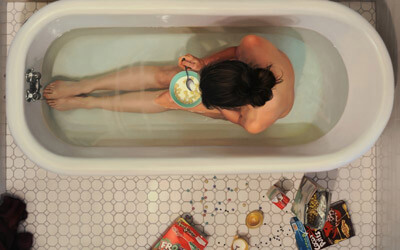
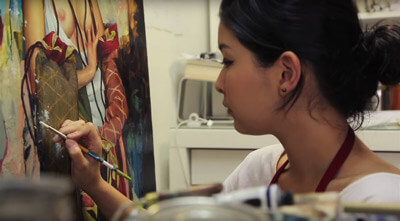
Wide Walls goes on to write that “The contemporary art scene in the United States is highly diverse comprised of established multitalented artists as well as fearless young creatives bursting with new ideas and visions. California-based and Korean-born Soey Milk is one of the young artists who has already made a name for herself not only in the United States but in the international art world.”
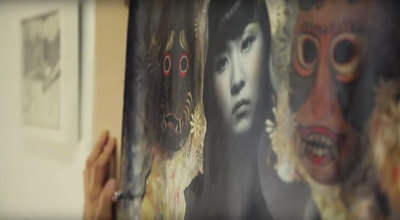
In the summer of 2014, the prolific filmmaker Eric Minh Swenson made a sweet little short about Soey entitled “Soey Milk: Beloved.” The video offers a behind-the-scenes look into her studio as she is working on a piece of art. Enjoy!
This November, EVOKE Contemporary’s Railyard gallery space transforms into a military cache with Jason Siegel and Keith D’Angelo’s innovative sculptural art installation, Shoot Portraits, Not People. Sniper rifles, Uzis, claymore mines and even a 1947 Willys Jeep will occupy the gallery in a jarring and immersive display of military paraphernalia. Upon closer inspection of this provocative exhibit, however, we find lenses disguised as grenades, photo winders in place of triggers and film canisters strung together as ammunition belts. Denver-based duo Siegel and D’Angelo, professional photographer and accomplished metal artist respectively, build anatomically correct weapons from sourced camera parts to create interactive and powerful installations that comment on the violent abuse of these artful machines, while cleverly exposing the shared vocabulary associated with photography and weaponry.
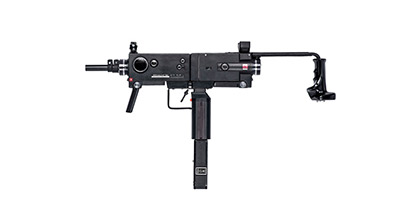
Due to our current political climate, blatant imagery of guns or high-powered weaponry instills a recoiling, shuddering feeling in many of us. For others, it sparks heated debate on the timely and controversial issues surrounding gun control. Shoot Portraits, Not People takes a clear stance against gun violence with the project’s overt title, but Siegel and D’Angelo also bring up an intriguing perspective through the presentation of the work itself. Their assemblage sculptures are constructed to be extremely anatomically correct; they are startling in their accuracy and resemblance of real weaponry. (So much so that cops were called on their first exhibit to investigate the illegal sale of firearms.) They’re also placed in an immersive display, transporting the viewer into an armed bunker complete with military themed props and accessories. Some responses to the project have been negative; who wants to see more abrasive imagery of assault rifles and machine guns? Once we realize, however, that these “guns” are actually conglomerated camera parts, we can relax some of our initial anxieties and curiously explore the sculptures’ intelligent and innovative construction. Some of the “guns” can even be held, dissolving the irrational fear of an accidental trigger pull or unexplained explosion. We notice the intricacies of each piece’s anatomy and maybe even begin to see the composition of high powered-weaponry as an art form in itself.
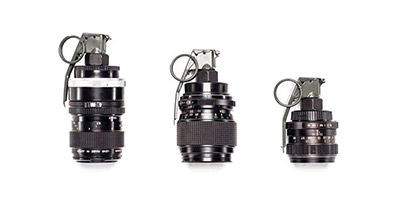
In this way, Shoot Portraits, Not People pays homage to the aesthetics of these complex machines while simultaneously taking a stance against them, or at least the way we see them being used today. “As far as taking a position with the project, it’s right there in the name,” says D’Angelo, whose social work studies and humanitarian interests fueled his enthusiasm for the project. “We walk a thin line,” adds Siegel. “It’s an anti-violence campaign, but doesn’t condemn the recreational use of firearms. It’s a juxtaposed position in the art world.”
<< Pop Up 1 - Enter Your Content Here >>
“We are thrilled with Jana’s exhibit,” said Josef Díaz, the museum’s interim director. “These artists are pushing to incorporate innovative ideas and forms that stretch the boundaries of traditional iconography. When visitors walk through GenNext, they’ll hear a dialogue between past and present through our blend of historical and contemporary art.”
The Museum of Spanish Colonial Art and the Spanish Colonial Arts Society oversee the annual Spanish Market and its celebration of traditional art in the Santa Fe Plaza. This year’s event, July 28–29, coincides with the exhibit, giving visitors an opportunity to see the best in both traditional and contemporary work. Special events accompanying the exhibit throughout its run include:
June 10, 2 pm, a talk by award-winning santero Arthur Lopez at the museum.
July 25, 5:30 p.m., a panel discussion on “Future Tradition,” location TBD.
August 9, 5:30 pm, a talk by Patrick McGrath Muñiz at the museum.
September 21, 5:30 pm, “Drinking with the Artists”
Special thanks for this exhibition goes to New Mexico Hard Cider and SouthWest Promotionz.
For more information and high-res images of works in the exhibit, contact:
Josef Díaz, jdiaz@spanishcolonial.org, 505-982-2226
Jana Gottshalk, jgottshalk@spanishcolonial.org, 505-982-2226
The Museum of Spanish Colonial Art collects, preserves, and exhibits the Spanish colonial art of New Mexico and beyond, and educates the public about its related cultures and living traditions. It is located on Museum Hill, in Santa Fe, at 750 Camino Lejo.
Call 505-982-2226 or log onto spanishcolonial.org.
